You are using an outdated browser. Please upgrade your browser to improve your experience.
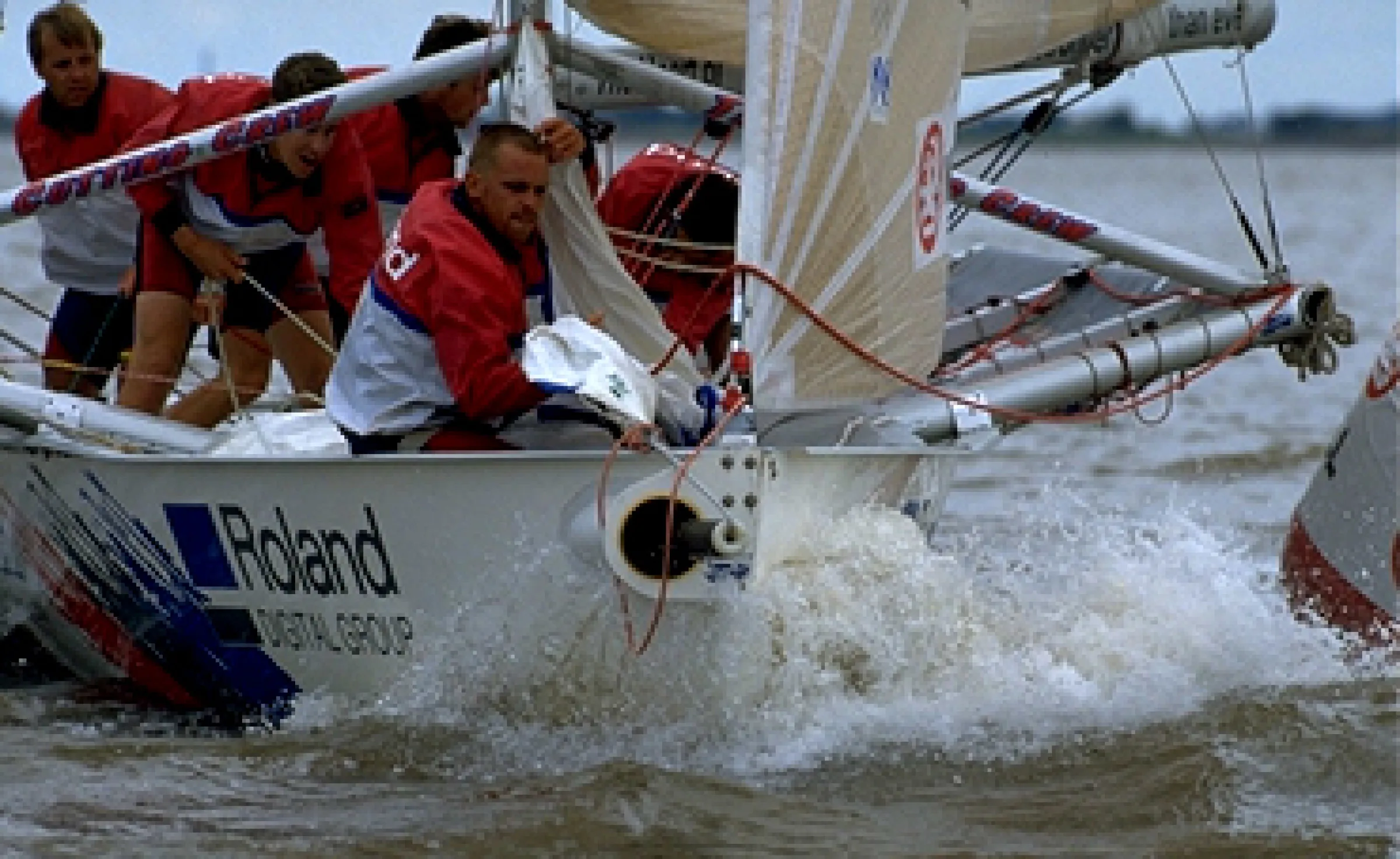

Flyer (Ultimate 30) & the Ultra 30 Class
Design number: 73 year: 1988.
It’s over thirty years now since the Ultra 30 story began. Rob had been commissioned to design Flyer, an Annapolis-built competitor in the exciting American Ultimate Yacht Race circuit, which had three or four good years before it started petering out. The boats were designed to a restricted class rule and the circuit was entirely professional, with prize money awarded. Over the life of the event Flyer, skippered by Mike Hobson, was the biggest prize-money earner, so it was a good result for the HYD office.
At about the same time in the UK we were all coming out of the back of the Deed of Gift America’s Cup challenge event between Dennis Conner’s catamaran and Sir Michael Fay’s leviathan, with the UK’s frustrated role in this manifesting itself in Blue Arrow, a foil-stabilised monohull that was intended to be able to compete with the cat but, technically, be a monohull. It’s a long story for another day, and despite Peter de Savary’s best efforts at getting Fay to allow us to race against him for the right to challenge Conner, the New Zealand team would not ultimately take us on.
That left a lot of people - the top end of UK’s sailing talent really - looking forward to a pretty quiet time. Rob and Derek Clark, Design Coordinator for the Blue Arrow Challenge, spent a lot of time discussing this and felt what was needed was a version of the Ultimate Yacht Race for the UK. But the general feeling was that the open aspect of the Ultimate Yacht Race wouldn’t work in the UK as well as a one-design would, with a strong element of cost control. The Ultra was based on our Flyer design, but whereas Flyer was of fairly exotic carbon construction, the Ultra 30 was designed to be of much lower cost in order to widen the point of entry. The laminate design was by Giovanni Belgrano, with the brief being to make sure that these could be crash and burn boats without much potential for downtime. We felt this was what professional sailing, and accompanying television, needed.
How to get a new concept off the ground is always challenging. What Derek and Rob did was to host an evening for potentially interested parties in a meeting room of a Brockenhurst hotel, and they had the great and good of British sailing expertise within the four walls, with lots of enthusiastic discussion. However, we were all concerned that it shouldn’t end up just being a talking shop and finally it was a case of trying to flush out those who might make it happen. Silence, for quite a while, until John Caulcutt showed huge leadership by popping his hand up first with words to the effect of, ‘Sod it, I’ll have one’. It wasn’t long before we had about six hands in the air, with Peter Newlands and Ossie Stewart following John. It was a rare moment when one, fairly spontaneous, three-hour meeting nurtured a whole decade of the most exciting televisual sailing.
With momentum assured, Ian Ridge was tasked to press on with the tooling, funded by Derek and Rob, and a full calendar of events followed the next season.

- Yachting World
- Digital Edition

World’s coolest yachts: The Ultra 30
- August 31, 2021
We ask top sailors and marine industry gurus to choose the coolest and most innovative yachts of our times. Eddie Warden Owen nominates The Ultra 30

“The Ultra 30s were the coolest boats, were way ahead of their time,” says Eddie Warden Owen , who skippered an Ultra 30 and also ran the circuit for several years.
The Ultra 30 circuit was the original spectator-friendly sailing concept, with short-course, crash-and-burn style racing broadcast on BBC Grandstand, the prime Saturday sports show of the 1990s.
It attracted Olympic sailors and commercial sponsorship, and developed a multi-stage circuit.
The dinghies were monstrously overpowered, with bowsprits up to 15ft long and over 500ft2 of sail area balanced by a crew of nine that required complex crew co-ordination in every manoeuvre.

“You had nine crew on racks and then we put trapezes on – it led to a huge step up in speed. They were unbelievable to sail.
“Even the best would capsize and at the end of a 20-minute race the crew would be completely exhausted. And we’d have three races a day,” Warden Owen recalls.
Make sure you check out our full list of Coolest Yachts.
The Ultra 30 stats rating:
Top speed: 25 knots LOA: 30ft/9.1m Launched: 1988 Berths: 0 (9 trapezes) Price: £65,000 Adrenalin factor: 95%
Eddie Warden Owen
Eddie Warden Owen is CEO of the Royal Ocean Racing Club and has skippered, helmed and coached for many top teams.
He graduated from sailing GP14s, Fireballs and 505s to Olympic selection in the 470 class in 1980.
He was the UK J/24 champion four years in a row and has been involved in seven America’s Cup campaigns.
If you enjoyed this….
Yachting World is the world’s leading magazine for bluewater cruisers and offshore sailors. Every month we have inspirational adventures and practical features to help you realise your sailing dreams. Build your knowledge with a subscription delivered to your door. See our latest offers and save at least 30% off the cover price.


Great choice! Your favorites are temporarily saved for this session. Sign in to save them permanently, access them on any device, and receive relevant alerts.
- Sailboat Guide
Ultra 30 is a 29 ′ 11 ″ / 9.1 m monohull sailboat designed by Rob Humphreys starting in 1988.
Rig and Sails
Auxilary power, accomodations, calculations.
The theoretical maximum speed that a displacement hull can move efficiently through the water is determined by it's waterline length and displacement. It may be unable to reach this speed if the boat is underpowered or heavily loaded, though it may exceed this speed given enough power. Read more.
Classic hull speed formula:
Hull Speed = 1.34 x √LWL
Max Speed/Length ratio = 8.26 ÷ Displacement/Length ratio .311 Hull Speed = Max Speed/Length ratio x √LWL
Sail Area / Displacement Ratio
A measure of the power of the sails relative to the weight of the boat. The higher the number, the higher the performance, but the harder the boat will be to handle. This ratio is a "non-dimensional" value that facilitates comparisons between boats of different types and sizes. Read more.
SA/D = SA ÷ (D ÷ 64) 2/3
- SA : Sail area in square feet, derived by adding the mainsail area to 100% of the foretriangle area (the lateral area above the deck between the mast and the forestay).
- D : Displacement in pounds.
Ballast / Displacement Ratio
A measure of the stability of a boat's hull that suggests how well a monohull will stand up to its sails. The ballast displacement ratio indicates how much of the weight of a boat is placed for maximum stability against capsizing and is an indicator of stiffness and resistance to capsize.
Ballast / Displacement * 100
Displacement / Length Ratio
A measure of the weight of the boat relative to it's length at the waterline. The higher a boat’s D/L ratio, the more easily it will carry a load and the more comfortable its motion will be. The lower a boat's ratio is, the less power it takes to drive the boat to its nominal hull speed or beyond. Read more.
D/L = (D ÷ 2240) ÷ (0.01 x LWL)³
- D: Displacement of the boat in pounds.
- LWL: Waterline length in feet
Comfort Ratio
This ratio assess how quickly and abruptly a boat’s hull reacts to waves in a significant seaway, these being the elements of a boat’s motion most likely to cause seasickness. Read more.
Comfort ratio = D ÷ (.65 x (.7 LWL + .3 LOA) x Beam 1.33 )
- D: Displacement of the boat in pounds
- LOA: Length overall in feet
- Beam: Width of boat at the widest point in feet
Capsize Screening Formula
This formula attempts to indicate whether a given boat might be too wide and light to readily right itself after being overturned in extreme conditions. Read more.
CSV = Beam ÷ ³√(D / 64)
Beam with racks: 14’. Built for the ULTRA 30 Gran Prix Circuit which existed for a number of years in the UK, beginning in the early 1990’s. On board cameras were sometimes used with events shown on BBC television. The rules were changed a number of times with trapezes later being allowed. Also called ULTIMATE 30.
Embed this page on your own website by copying and pasting this code.
- About Sailboat Guide
©2024 Sea Time Tech, LLC
This site is protected by reCAPTCHA and the Google Privacy Policy and Terms of Service apply.
- Share full article
Advertisement
Supported by
YACTHING; Pro Racing Starts in the Fast, Unruly Ultimate 30
By Barbara Lloyd
- May 8, 1988
The recent marriage between yachting and professional sports has produced its first offspring: an unruly child called the Ultimate 30. One of these racing boats was christened late last month in Noank, Conn., and it already has a mind of its own.
''It's just ugly,'' said John Kolius, the boat's intrepid skipper. ''We've been out sailing four times, and we almost dumped over twice.''
The 30-foot craft is skittish as a colt. At 2,000 pounds, it's extremely light for its length; there's little to keep it upright under sail except the weight of the crew. Crew members sit on pipe racks that extend from the deck over the water like bleachers. When the boat maneuvers through a tack, the racks often catch in the water like airplane wings too low to a runway. It is able to reach speeds of 20 knots and more, depending on conditions.
There are six Ultimate 30's ready to sail. Kolius is skipper for Team Connecticut, a group sponsored by Mystic Marine Finance of Mystic, Conn. The boat was designed by Bernard Nivelt, who is also a member of Dennis Conner's America's Cup design team. The 30-footers are yachting's answer to thoroughbred horses, and they are being groomed for a Kentucky Derby equivalent, the Ultimate Yacht Race, one of the first professional yacht races in the United States. Starting in Texas
The first segment of the regatta began Friday in Corpus Christi, Tex. Scheduled to last through May 15, the intitial competition will include seven races for the Ultimate 30's. Organizers are also planning races for the J-24, an existing one-design class, and the Hobie 21, a new production catamaran.
The Ultimate Yacht Race will also include segments in San Francisco, July 22-30, and in Mystic, Oct. 9-15. NBC-TV plans an hourlong special after each series.
Glenn Darden and his brother, Toby, former collegiate sailors from Fort Worth, organized the Ultimate Yacht Race. They had been to the America's Cup series, an amateur event with professional overtones, in Australia last year, and liked what they saw. ''I think people want to see a professional regatta get off the ground,'' Glenn Darden said last week.
With a recent relaxation of the rules on racing for cash prizes, several other groups have plans for professional competitions. For example, ProSail, a group that originated in Newport, R.I., planned to race 12-Meters for prize money. But the promoter decided instead to organize a championship series for multihulls beginning next August.
The purse for the Ultimate Yacht Race will depend on the number of entries at each venue. And for the Ultimate 30's, it will be winner-take-all. Each boat pays $20,000 to enter; in Corpus Christi, the purse will be $120,000.
Darden expects momentum to pick up after the Texas race. ''The 30-footers are really where the action is,'' he said. ''It's where all the design juices are. A lot of designers are just waiting to see what happens.'' 'Technology Showcase'
A team from New Zealand is bringing an Ultimate 30 with 11 appendages below the waterline. The other boats are American entries. Two, including the Team Connecticut yacht, were built by Hi-Tech Boats of Norwich, Conn.
John Heineman, the president of Hi-Tech, sees the birth of the Ultimate 30 as a ''technology showcase.'' His company is developing new methods and materials for boat building. ''We're taking another step up in technology,'' he said recently. ''We're opening the valve for the trickle-down effect, for aerospace materials filtering into the mass boating market.''
Kolius cautions that the price for unlimited experimentation may run too high. The new boats are costing anywhere from $50,000 to $100,000 to build. ''They're fun to sail, but it's not going to be any fun if you have to keep pouring money down a black hole,'' he said.
Kolius would like to see race organizers develop stricter rules for design. He says he fears the Ultimate 30's will die out as a class soon after they're born.
Phocea, a 237-foot French sailing yacht, plans to leave New York Harbor this week in an attempt to break a trans-Atlantic record set in 1905 by the schooner Atlantic.
The luxury yacht is owned by a French businessman, Bernard Tapie. He wants to beat the Atlantic's monohull record of 12 days 4 hours to England. His boat is the former Club Mediterranee, a boat sailed single-handedly by the late Alain Colas of France in a 1976 race across the Atlantic Ocean.

30 ft sports boat (Ultimate / Ultra 30 modified)
Used boats for sale, trailer boats - monohull.
Better Sailing

Best Sailboats Under 30 Feet
Small sailboats are attractive for many reasons, one of them being is that they are not as expensive and out of your budget. They are also great for learning how to sail as they are easily maneuverable. However, sailboats around the 30 feet mark provide the best of both worlds as they are both great and easy for sailing but are also big enough for you to spend a few days onboard for a weekend sailing trip, for example. If you are looking to buy a sailboat that will fit this bill, this list of the best sailboats under 30 feet with the amenities available in a large vessel.
Here are the best sailboats under 30 feet in no particular order.
The Hunter 27 is one of the most popular sailboats under 30 feet and has the numbers to prove it with over 2000 of these boats sold. The Hunter 27 is a series of sailboats, built by Marlow Hunter in Florida, USA, since 1974. Variations of the Hunter 27 are still being produced today. This sailboat is great under sail but is also powered by a 14 HP Yanmar engine. If you are looking for a small, affordable sailboat that can accommodate a couple or a small family for a few days out on the water, then look no further than a Hunter 27. Finally, you can find used Hunter 27 in good condition from the early ’80s for around 10k and newer models from the 2010s’ for up to 50k.

It is a comfortable and speedy sailboat with ample space below the deck. It is open and airy. Named after its designer, Alan Andrews, he is known for creating fast race boats and lights. This is a 28-footer sailboat that is definitely suited for club racing. It has a galley, 6 berths, head, and nav area. This boat is so spacious that you would forget that this is a sailboat under 30 feet. It has a retractable keel, which makes it easy to launch and haul. This ensures it to be a racer as well as a daysailer. Finally, a used Andrews 28 in good condition is going for around $25,000-40,000.
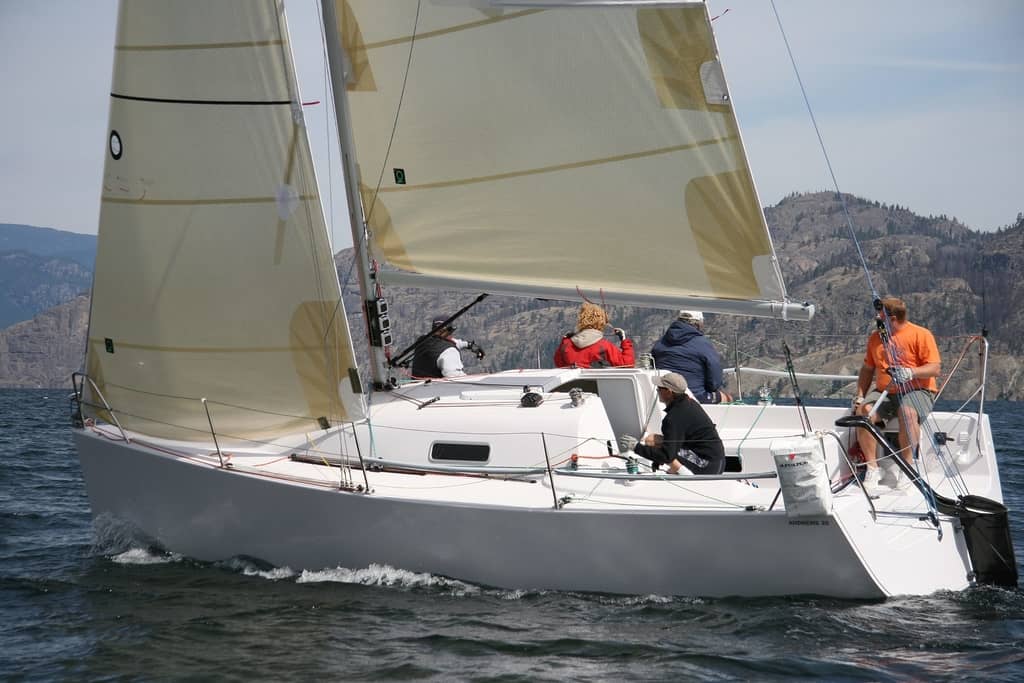
This is a multi-aspect sailboat that tries to bridge a gap between a family, comfortable, safe, and competitive racer. It is done quite well in doing so. This sailboat was able to win the 1970 IOR North America Half-Ton Cup, which proves that it not only has the looks but speed too. Speed is not the only strength of the ranger 26 as it also has a spacious cockpit which is over 7 feet. It has a good balance of cabin height and freeboard, giving it a great profile that hasn’t been sacrificed for standing headroom. Also, the Ranger 26 is one of the largest trailable sailboats. Finally, a used Ranger 26 from the 70s’ in good condition is going for around $10,000-15,000.

>>Also Read: Best Sailboats Under 100k
This sailboat is one of the most innovative and unusual boats in the whole bunch. It has a contemporary profile topside and also an inviting floor plan below the deck; this boat is both comfortable and stylish. The Etap uses a double hull construction method that makes the ship almost unsinkable. This sailboat has 6 berths, a nav area, and a galley, but you will not feel crowded in the back. The back area is equipped with many hatches and ports that make extend the space. Finally, a used Etap 28s in good condition is going for around $20,000-60,000 depending on the age of the boat.

>>Also Read: Etap 24i Review
This boat came started its production in the year 1971, and it was an instant success in the local racing scenes. As this is a modest 27-footer, the Newport 27 has a great spacious interior and has over 6 feet of standing headroom. It has 4 berths, nav station, galley, and head. It has all the amenities that you will find in a bigger boat but in a compact package. This boat is quick in light air; however, the tiller steering starts to get out of control once the breeze increases and the weather leads to end your sail early. Finally, a used Newport 27 from the 70s’ or 80s’ in good condition is going for around $6,000-11,000.
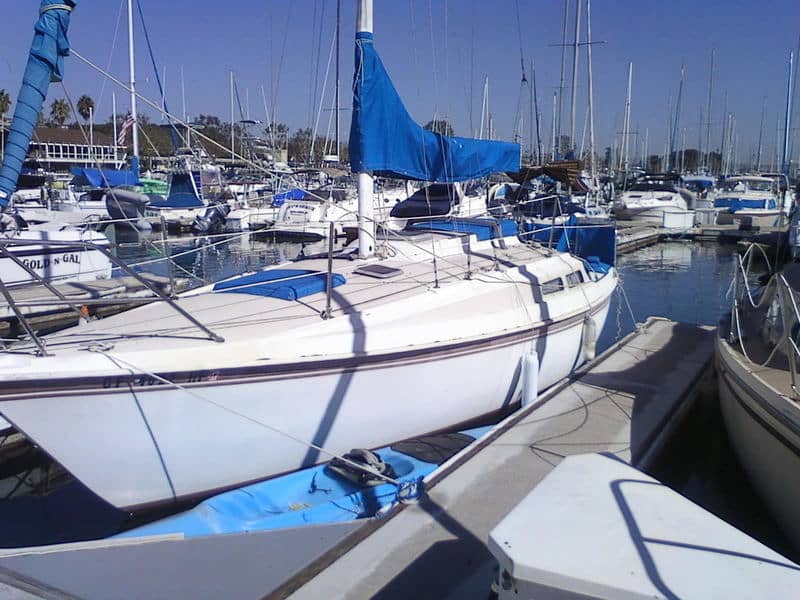
Catalina 275 Sport
The Catalina is known for their large cruising boats, but they also have small boats too. The Catalina 275 offers both great performance and an enjoyable sailing experience packed on a 27’6 trailable sailboat. This boat has a hand-laminated fiberglass hull and is extremely versatile. Like most boats that are built by Catalina, this boat has a huge self-bailing cockpit. It also a nice saloon below deck, which transforms into a comfortable v berth. Also, it has a nice galley with a big cooler drawer to pack your essentials for your sailing trip. The standard equipment has a tiller extension and hiking straps. This boat will convince you that you do not need a sailboat over 300 feet to enjoy a nice weekend sailing adventure. A new Catalina 275 starts at around $75,000, and a recent-year used one for around $60,000.
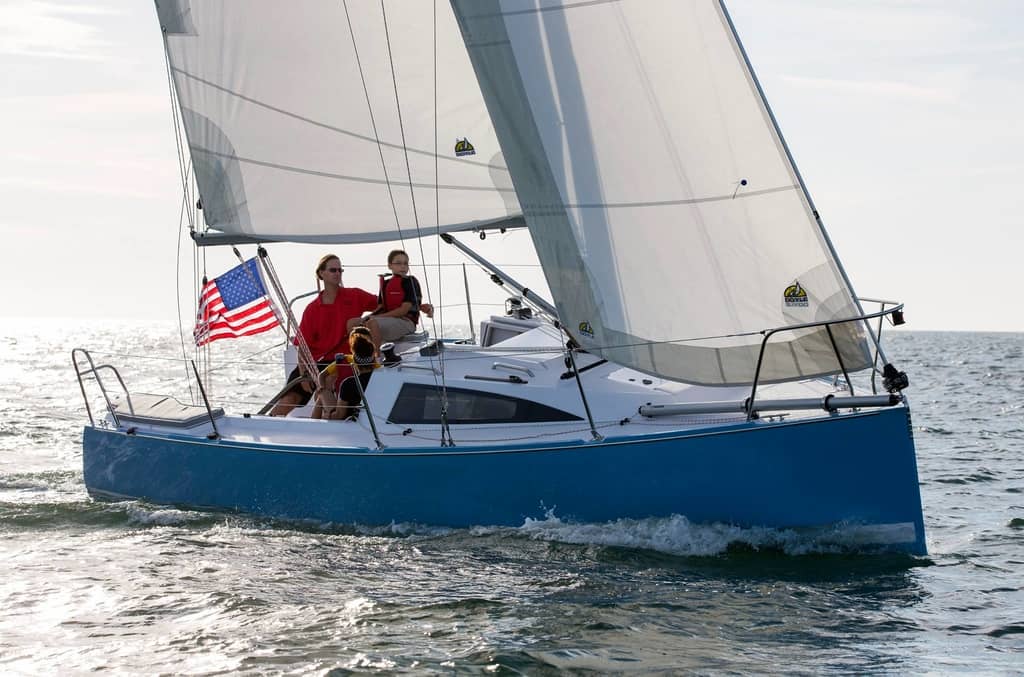
>>Also Read: Best Sailboats to Live On
Catalina 22 Capri and Catalina 22 Sport
The Catalina 22 is extremely comfortable, safe at sea, and easier to handle and maintain than any boat in its class. The beautiful deck profile is flat across the stern. It has wider cockpit curves for optimum sailing comfort during and after sailing. These are very popular trailer sailers that are widely used in both ocean sailing and lake sailing, and daysailors swear by both models. The Catalina 22 was first built in 1969, and it is still being produced in the US. The Catalina 22 is one of the most produced boats in its size range and has achieved huge commercial success. Finally, you can purchase a new Catalina 22 starts at around $25,000, but since this model has been around since the 60s’ you can still pick an early-year model up from the 70s’ for as low as $3,000.
Island Packet 27
This is an American-made sailboat first built in the 1980s’. The Island Packet 27 is a recreational keelboat made out of fiberglass, with beautiful teak trim and holly cabin sole plywood. It is a Cutter-rigged sloop, with a spooned raked stem, a vertical transom, a keel-mounted rudder, and a full keel. It has a displacement of 8,000 lb and carries 3,000 lb of ballast. Keep in mind that the Packet 27 is a cruiser and not suitable for racing. The broad beam gives an unusually spacious interior for a sailboat under 30 feet. This boat sails very well, it has a big boat feel to it, it is very solid, and you won’t get thrown around in it; what else do you need? Finally, a used Island Packet 27 in good condition is going for around $30,000-45,000 depending on the age of the boat.

>>Also Read: Best Pocket Cruisers Under 20 Feet
This boat was first introduced in the year 1969; the Balboa 26 continues to dominate in the budget-friendly cruisers. This boat is heavy and sturdy; the boat’s stress points are reinforced. The cockpit can take 4 adults at a time. It is self-bailing, making sure that the sailors remain dry. This beautiful sailboat is only 26 feet. Still, the balboa 26 still has room for a double berth, a freshwater pump, galley with a stove, and an optional V-berth or marine head. It can adjust five people for sleeping, but the ideal number would be two or three. When the Balboa is under sail, it is maneuverable and fast. It will also prove handy in the heavy breeze when the weather helm increases. Finally, a used Balboa 26 from the 70s’ is going for around $3,000-6,000.

Cape Dory 28
The teak accents and sleek lines of the Cape Dory 28 is an eye-catcher; the performance of this boat is also remarkable. This boat comes with almost all the amenities a bigger boat is equipped with. It comes with 2 settees, V-berth, and ahead. This boat is sound, safe, and comfortable while being capable of speed. The Cape Dory 28 is quick in light wind and capable and sturdy in heavy air. This boat deserves its praise when it comes in off the wind. It has a balanced helm and also the ability to cut through chop and still be able to tack easily. Finally, a used Cape Dory 28 in good condition is going for around $20,000 depending on the age of the boat.
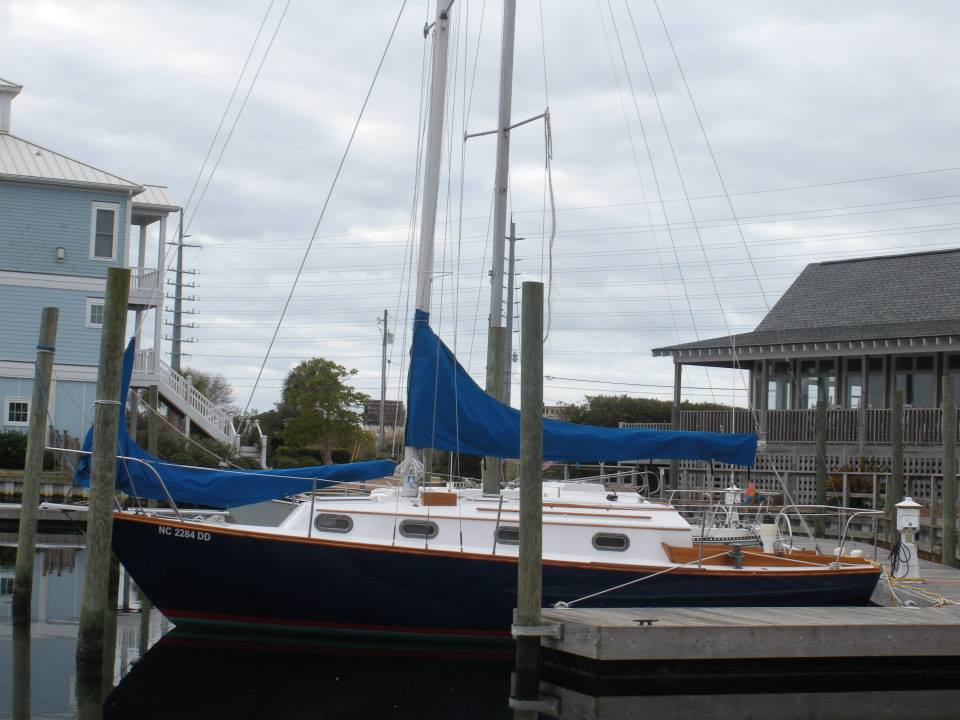
Islander Bahama 28
While this remains an eye-catcher, along with the 5-foot-6inch draft and with the 3,300 pounds of ballet, this boat sails swiftly and beautifully while responding quickly to the helm. This boat is inspired by the International Offshore Rule; this boat is unusually wide and offers stability in the breeze without sacrificing the lines and sheer, which makes it attractive. The Bahamas below its deck has plenty of berth and storage space with a galley complete with stove, sink, and icebox. Finally, a used Cape Dory 28 in good condition is going for around $9,000-15,000 depending on the age of the boat.
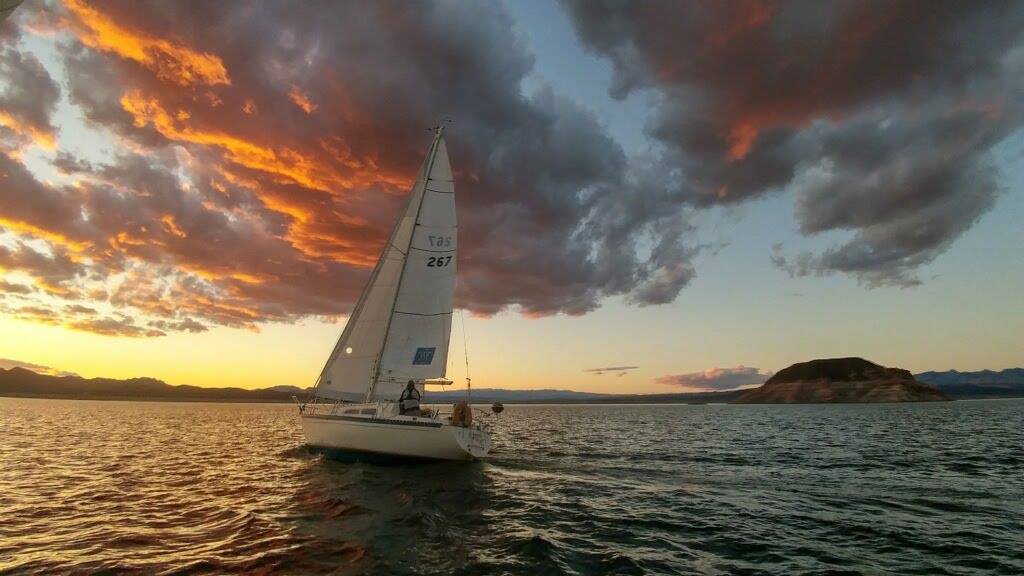
Contessa 26
This boat was released in the year 1965, and it then and there proved to be a strong, lightweight cruise boat. This boat has been proving itself since its first sail and a great choice for two people. Even though the boat is sturdy, the upwind came sometimes disturbs the direction. This boat does have much standing headroom, but it performs well as a daysailer. Finally, a used Contessa 26 in good condition is going for around $10,000 depending on the age of the boat.

Final Thoughts
Sailboats under 30 feet are great because they are affordable and provide the best of everything. Almost all of them handle great, they are easy to maintain and provide all the necessary amenities for trips up to a few days long. Sailboats under 30 feet are not ideal for passages but make if you are willing to increase your budget and go a little bigger then these are the best small sailboats for circumvention .
Remember, if you are looking for a small sailboat under 30 feet for your summer or weekend sailing expeditions, then any of the above mentioned will do the trick.
Peter is the editor of Better Sailing. He has sailed for countless hours and has maintained his own boats and sailboats for years. After years of trial and error, he decided to start this website to share the knowledge.
Related Posts

The Ultimate Guide to Choosing the Best Fishing Line for Trolling

Lagoon Catamaran Review: Are Lagoon Catamarans Good?

Best Inboard Boat Engine Brands

Are O’Day Sailboats Good? A Closer Look at a Classic Brand
- Buyer's Guide
- Destinations
- Maintenance
- Sailing Info
Hit enter to search or ESC to close.
Ultimate 30 one design
Ultimate 30 one design - Pms / STW003596
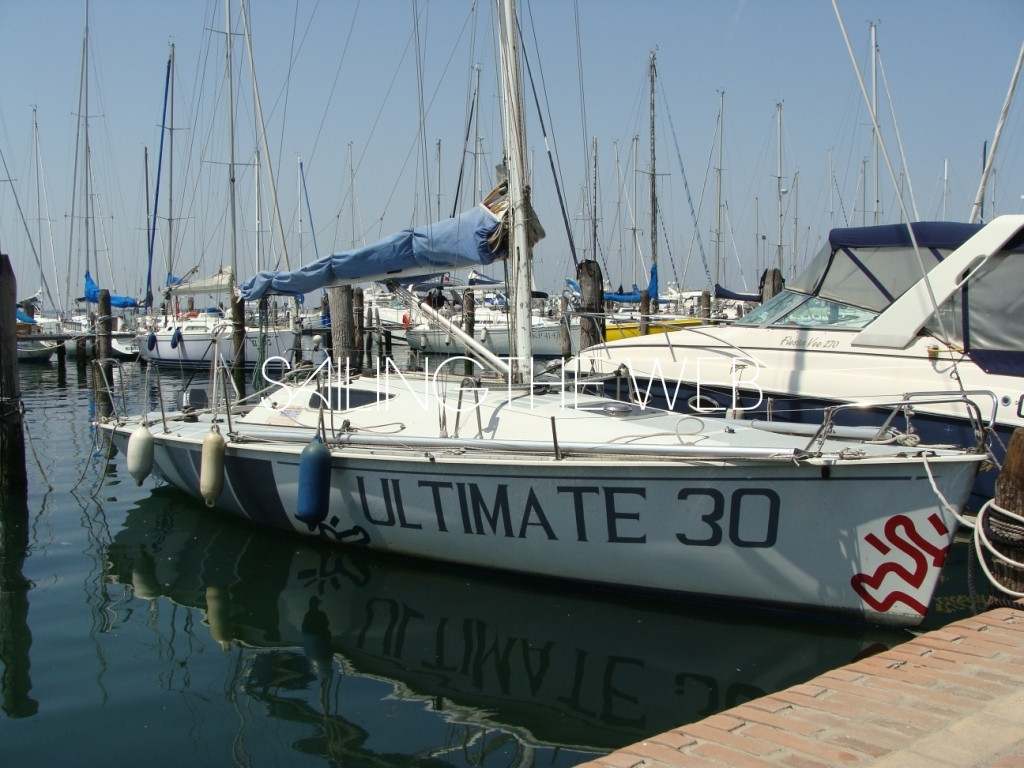
cabin cruiser
overall length
hull length
waterline length
standard draft
minimum draft
displacement
diesel tank
mast height
If you find some wrong or lacking data of this boat, you can propose an update.
Technical forum: ultimate 30 one design, note: you will be redirected to another website., support the ultimate sailboat database.
The contents on this website, which today you can simply consult and use, have been collected, organized and archived by people who worked and invested in this project with passion and dedication for many years.
Before proceeding to browse, support our archive with a small donation that will allow us to maintain and improve this project.
proceed, I will donate next time
To proceed, you need to sign-in
- Naval Architecture & Engineering
- Detail Design & Production Support
PERFORMANCE MARINE CRAFT
- Nemo – Ultimate 30 Conversion
Nemo is my personal runabout / camp cruiser. She is the result of blind chance, opportunism and intuition rather than engineering and design. Nemo started life as the Hexcel Ultimate 30 professional racing skiff designed by Ian Murray of Australian 18 fame and built in carbon/nomex by McConaghy in Sydney Australia. After the boat sat in storage for several years, Jonathan McKee purchased her in order to scavenge parts and sails for the Riptide 35 that I designed for him. When that was finished I could not bear to see the beautiful hull broken up so Jonathan gave it to me. There was not enough volume in the hull to allow sufficient ballast for efficient sailing so I decided to turn it into an efficient powerboat. In a grass lot, with nothing but a sawzall and a grinder, some plywood, foam, glass and epoxy I “chopped and channelled” the boat into her current form. Although a bit quirky to handle and wet, she is fun, efficient (9 litres/hr @ 15kts), and a great source of conversation.
30 Sailboat: A Comprehensive Guide to Choosing the Perfect Vessel
by Emma Sullivan | Aug 3, 2023 | Sailboat Gear and Equipment

== Short answer 30 sailboat: ==
A 30 sailboat refers to a specific class of sailboats that measure around 30 feet in length. These boats are generally designed for cruising and racing purposes, offering a balance between comfort and performance on the water.
The Ultimate Guide to Choosing a 30 Sailboat: Factors to Consider and Top Recommendations
Welcome to the ultimate guide to choosing a 30-foot sailboat! Whether you’re an experienced sailor or a newbie looking to delve into the world of sailboats, this comprehensive guide will walk you through all the factors you should consider before making your purchase. We’ll also provide you with some top recommendations that are bound to make your sailing adventures unforgettable.
When it comes to finding the perfect 30-foot sailboat, there are several key factors that you need to take into account. Let’s dive deep into each of these considerations:
1. Intended Use: Before investing in a sailboat, think about how and where you plan to use it. Are you looking for a boat suitable for cruising coastal areas or one that can handle long bluewater passages? Determining your intended use will enable you to narrow down your options and find a vessel perfectly suited for your needs.
2. Sail Plan: The sail plan refers to the arrangement, size, and number of sails on the boat. Consider whether you prefer a sloop (with one mast) or a cutter (with two masts), as this will affect the boat’s performance and handling characteristics.
3. Construction Material: Sailboats can be built using different materials such as fiberglass, steel, aluminum, or wood. Each material has its advantages and disadvantages in terms of maintenance requirements, durability, and cost. Research thoroughly to determine which construction material suits your preferences.
4. Interior Layout: Comfort is crucial when spending extended periods on board, so carefully examine the interior layout of any potential boats under consideration. Look for amenities like spacious berths, ample storage spaces for provisions and equipment, a well-designed galley area for cooking meals onboard, and proper ventilation systems.
5. Rigging Design: The rigging consists of all the ropes (lines) used to control the sails and maneuver the boat effectively. Pay attention to the quality of rigging hardware like winches, blocks, and cleats. Upgrades may be necessary to ensure smooth sailing and ease of handling.
6. Keel Type : Sailboats have different keel types, each serving a particular purpose. Consider whether you need a deep fin keel for improved performance or a full keel for better stability and offshore capabilities. Smaller daggerboards or swing keels provide flexibility in shallow waters.
Now that we’ve covered the essential factors to keep in mind while selecting your 30-foot sailboat, let’s move on to some top recommendations:
1. Catalina 30: Known for its spaciousness and durability, the Catalina 30 remains one of the most popular choices among sailors . Its comfortable interior layout provides ample room for both living and entertaining, making it ideal for extended cruising.
2. Beneteau Oceanis 30: With its sleek design and impressive performance on the water, the Beneteau Oceanis 30 is perfect for those seeking speed and agility without compromising comfort. It offers numerous customizable options to suit individual preferences.
3. Jeanneau Sun Odyssey 319: This compact sailboat boasts excellent maneuverability coupled with well-designed interiors that maximize livable space. The Jeanneau Sun Odyssey 319 is an excellent choice if you prioritize easy handling and comfort.
In conclusion, choosing a 30-foot sailboat requires careful consideration of factors such as intended use, sail plan, construction material, interior layout, rigging design , and keel type. By taking these aspects into account and exploring our recommended options like the Catalina 30, Beneteau Oceanis 30, or Jeanneau Sun Odyssey 319, you’re bound to find your dream vessel that will accompany you on countless memorable journeys across the open seas !
Sail Away with Confidence: A Step-by-Step Guide on How to Sail a 30 Sailboat
Title: Sail Away with Confidence: A Step-by-Step Guide on How to Sail a 30′ Sailboat
Introduction:
Embarking on an exciting sailing adventure can be both invigorating and daunting at the same time. Whether you’re a seasoned sailor or a novice looking to sail a 30-foot sailboat, this comprehensive guide is tailored to help you master the art of sailing with confidence. We’ll walk you through each step, providing valuable insights and tips to ensure smooth voyages on the open seas .
1. Choosing the Right Vessel: The starting point for any successful sailing journey is selecting the right boat . A 30′ sailboat strikes a perfect balance between size and maneuverability for beginners. We’ll explore key factors such as stability, rigging setup, and design characteristics that contribute to an optimal sailing experience .
2. Safety First: Before setting sails, prioritizing safety is paramount. Learn how to perform safety checks, understand essential equipment like life jackets, flares, fire extinguishers, and navigational tools . We’ll guide you through essential emergency protocols so that you can confidently handle unforeseen situations while keeping yourself and your crew out of harm’s way.
3. Navigating Knots & Lines: A sailor’s proficiency in knots makes all the difference when it comes to boat handling. From bowlines to figure-eight knots – we will provide detailed instructions accompanied by visual aids on various knot techniques every sailor must know by heart.
4. Sailing Fundamentals: Understanding the fundamental concepts of sailing involves grasping wind dynamics, points of sail like close-hauled and running downwind, tacking versus jibing maneuvers, steering using tiller or wheel controls – our witty explanations will make these concepts easy to comprehend even for rookies.
5. Hoisting & Adjusting Sails: Efficiently raising sails is crucial for harnessing wind power effectively during your voyage. In this section, we will guide you on raising the mainsail and hoisting the jib while providing tips on trimming and sail shape adjustments to maximize performance based on wind conditions.
6. Working with Weather & Wind: Learning to interpret weather patterns and wind directions can be a challenge for novice sailors . Fear not! Our clever tips and explanations will help you decipher weather reports and understand how various meteorological phenomena affect your sailing experience. We’ll also shed light on dealing with unexpected changes in wind strength or direction.
7. Anchoring Techniques: Mastering anchoring techniques is vital for any sailor planning overnight stays or peaceful breaks during their journey. With our step-by-step instructions, you’ll learn the secret to setting an anchor securely, effectively using rode lines, anti-drag devices, and techniques for picking up your anchor effortlessly.
8. Docking & Mooring: Approaching unfamiliar docks or maneuvering your boat into a tight slip requires both skill and confidence. Understanding docking etiquette, maneuvering techniques like spring lines, and employing assistive tools will make mooring hassle-free — reducing stress levels for both captain and crew.
9. Emergency Situations & Rescue Procedures: While no sailor hopes to encounter emergencies at sea, it’s crucial to prepare for them nonetheless. We’ll share professional advice on handling unforeseen circumstances such as man overboard drills, medical emergencies, equipment failures keeping composure when quick decision-making becomes essential.
Conclusion:
In this step-by-step guide on how to sail a 30′ sailboat , we’ve covered all the essential aspects necessary for every aspiring sailor to embark upon a confident voyage. From choosing the right vessel to mastering emergency procedures – this comprehensive breakdown aims to empower novices while offering valuable insights even experienced sailors might find helpful during their next adventure. So set sail with confidence; the seas await!
Frequently Asked Questions about Owning and Maintaining a 30 Sailboat
Title: Demystifying the Joys and Challenges of Owning and Maintaining a 30-foot Sailboat
Introduction: Owning a sailboat is like having your personal gateway to adventure, tranquility, and exploration. However, it’s natural for aspiring sailors to have several questions regarding the ownership and maintenance of a 30-foot sailboat. In this comprehensive guide, we’ll address some frequently asked questions that will help sailing enthusiasts navigate the waters with confidence.
Question 1: Why choose a 30-foot sailboat ? Answer: A 30-foot sailboat strikes an excellent balance between cost, comfort, and manageability. It offers ample space for sleeping quarters, storage compartments, and essential facilities like a galley and bathroom while remaining relatively easy to handle singlehandedly or with small crews. With proper planning, this size allows you to embark on overnight trips or even longer journeys without sacrificing too much maneuverability.
Question 2: How much does owning a 30-foot sailboat cost? Answer: The total cost of owning a boat goes beyond its purchase price. Factors such as insurance, mooring fees or marina charges (if applicable), routine maintenance expenses, fuel costs, outfitting/upgrades, winter storage fees (if applicable), and annual haul-outs should be considered in your budgeting process. While the exact figures vary depending on location and individual preferences, it’s advisable to allocate approximately 10-15% of the purchase price annually for ongoing expenses.
Question 3: Is sailing a physically demanding activity? Answer: Sailing can be physically demanding at times but can also be tailored to match your preferred level of activity. While handling larger sails or tacking in heavy winds might require some effort, modern innovations like roller furling systems make sailing more manageable than ever before. Furthermore, there are countless techniques that skilled sailors employ to reduce physical exertion while maximizing their enjoyment on the water. Engaging in regular exercise and maintaining a healthy lifestyle will undoubtedly enhance your sailing experience .
Question 4: What routine maintenance tasks are necessary for a 30-foot sailboat? Answer: To keep your sailboat seaworthy, several routine maintenance tasks are essential. These include regular hull cleaning, bottom painting (anti-fouling), inspection of sails and rigging, engine maintenance, checking and replacing worn-out components, ensuring proper electrical connections, and inspecting safety equipment such as life jackets and distress signals. Familiarizing yourself with an annual maintenance checklist is highly recommended to ensure that all aspects of your boat remain in top-notch condition.
Question 5: How do I prepare for long voyages on a 30-foot sailboat? Answer: Long voyages demand thorough preparation. Start by charting your desired route, understanding weather patterns along the way, and ensuring you have comprehensive navigation tools onboard. Stock up on food supplies, water reserves, spare parts for critical systems onboard, emergency repair materials, and safety gear such as life rafts. Additionally, brushing up on your knowledge of basic maintenance procedures will be invaluable during extended cruising adventures.
Conclusion: Owning and maintaining a 30-foot sailboat can bring immense joy and freedom while creating lasting memories on the water. By having these frequently asked questions answered in detail, prospective sailors can embark on their sailing journey well-informed and confident in their ability to navigate both the challenges and rewards of owning a sailboat. Bon voyage!
Exploring the World of 30 Foot Sailboats: From Classic Designs to Modern Innovations
Welcome to our blog series on exploring the world of 30-foot sailboats, where we delve into the fascinating realm of sailing vessels that perfectly balance tradition with modern innovations. In this article, we will take a closer look at the timeless elegance and cutting-edge advancements found in this popular boat size.
Classic designs hold a very special place in the hearts of sailors, and 30-foot sailboats offer a unique blend of nostalgia and functionality. Renowned yacht designers have crafted iconic boats in this size range throughout history, showcasing their exceptional skill in creating vessels that stand the test of time. From sleek lines to graceful proportions, these classic designs exude an air of elegance that never fails to captivate both sailors and non-sailors alike.
But while classic aesthetics might grab our attention initially, what truly sets 30-foot sailboats apart is their ability to incorporate modern innovations seamlessly. The marine industry has seen remarkable advancements in technology over recent decades, allowing for enhanced performance and safety features without compromising tradition.
One key area where modern innovation shines is in materials used for construction. Traditional wooden hulls are still adored by purists, but modern fibreglass laminates have become increasingly popular due to their durability, affordability, and ease of maintenance. The ability to mold complex shapes with fiberglass has enabled naval architects to push design boundaries further than ever before.
Another exciting development lies in rigging innovations. Sleek carbon-fiber masts not only reduce weight aloft but also significantly improve overall performance through increased stiffness and reduced windage. Innovations in sail design have led to improved aerodynamics, resulting in better control and higher speeds on 30-foot sailboats .
Furthermore, technological advances have revolutionized navigation systems onboard these boats . GPS chartplotters provide accurate positioning information while integrated weather forecasting tools allow sailors to plan their routes more efficiently and avoid adverse conditions – empowering them with newfound confidence on every voyage.
Safety is another paramount concern when it comes to modern sailboats. From updated hull designs incorporating foam-filled structures for better buoyancy to advanced self-righting systems, the safety features found on 30-foot sailboats provide peace of mind for both seasoned sailors and those new to the sport.
Another notable innovation transforming the sailing experience is electric propulsion. Many modern 30-foot sailboats now come equipped with electric motors, offering an environmentally friendly alternative to traditional diesel engines while providing quieter and more efficient sailing options for maneuvering around ports or in calm winds.
While classic designs continue to inspire us, it is essential to embrace innovation and progress within the world of sailboats. By combining historical elegance with state-of-the-art technology, 30-foot sailboats are the epitome of this harmonious balance. Whether you are a seasoned sailor looking for a timeless vessel or a newcomer seeking modern comforts without compromising tradition, these boats offer endless possibilities and an unmatched experience on the water.
In our upcoming blog posts, we will introduce you to some renowned classic 30-foot sailboat designs and explore fascinating stories behind their creation. We will also dive deeper into specific modern innovations shaping these vessels today . So stay tuned as we embark on this exciting journey into the captivating world of 30-foot sailboats – where tradition meets innovation in perfect harmony.
Mastering the Art of Maneuvering: Essential Tips for Handling a 30 Foot Sailboat
Title: Sail Away with Confidence: Mastering the Art of Maneuvering a 30-Foot Sailboat
Introduction: As every sailor can attest, navigating a sailboat is an exhilarating experience that requires finesse, skill, and a deep understanding of your vessel. Handling a 30-foot sailboat presents its own unique challenges and rewards. In this blog post, we will dive into essential tips to empower you to confidently maneuver a 30-foot sailboat like a seasoned pro.
1. Know Your Vessel Inside Out: Before setting sail , it’s crucial to develop an intimate relationship with your 30-foot beauty. Familiarize yourself with every nook and cranny on the boat – from the rigging to the engine room. By knowing your vessel inside out, you’ll be prepared for any situation that may arise during maneuvers.
2. Plan Your Moves Ahead: Effective maneuvering requires careful planning to anticipate obstacles and make well-informed decisions in real-time. Plot your course before setting off, considering factors such as wind direction, currents, and potential hazards along the path.
3. Embrace the Power of Propulsion: One of the key aspects of handling a 30-foot sailboat is understanding how to utilize propulsion effectively. Learn how to harness the power of your engine for both forward and reverse thrusts. This knowledge will prove invaluable when docking or maneuvering in tight spaces.
4. Master Bow Thrusters: Bow thrusters are invaluable tools for making precise movements when navigating narrow marinas or crowded anchorages. Understanding how these auxiliary propulsion systems function and practicing their use will give you greater control over your vessel’s movement.
5. Get Comfortable with Wind Dynamics: Wind is both friend and foe when sailing, impacting everything from speed to maneuvers. Learning how different wind strengths affect your boat ‘s behavior allows you to fine-tune adjustments while maintaining control during tough maneuvers like tacking or gybing.
6. Stay Mindful of Your Draft: A 30-foot sailboat often brings a moderate draft, making it essential to know your vessel ‘s depth limitations. Paying close attention to water depths and utilizing nautical charts ensures you avoid grounding or hitting underwater obstructions during maneuvers.
7. Communicate Clearly with Crew: Communication is the keystone of successful maneuvering. Establish clear and concise hand signals or verbal commands with your crew to facilitate smooth operation in various scenarios. This ensures that everyone is on the same page, minimizing confusion when executing complex maneuvers.
8. Practice Makes Perfect: No one becomes a master sailor overnight. Continual practice hones your skills and builds confidence in handling a 30-foot sailboat smoothly . Set aside time for drills, including docking practice, anchoring exercises, or practicing emergency maneuvers like man overboard scenarios.
Conclusion: Mastering the art of maneuvering a 30-foot sailboat demands skill, knowledge, and experience – but the rewards are immeasurable as you navigate vast blue waters with grace and confidence. By knowing your vessel, planning movements ahead, understanding propulsion dynamics, respecting wind forces, staying mindful of drafts, communicating effectively with your crew, and consistently practicing your skills – you’ll soon find yourself at ease while traversing both calm seas and challenging conditions alike. So set those sails confidently; adventure awaits!
Unleash Your Adventurous Spirit: Discovering the Thrills and Joys of Sailing on a 30′ Boat
Have you ever felt the call of the open sea? Have you yearned for the wind in your hair and the taste of salt on your lips? If so, then it’s time to unleash your adventurous spirit and discover the thrills and joys of sailing on a 30′ boat.
Sailing is not just a hobby or a sport; it’s an exhilarating escape from the demands of daily life. It’s about embracing nature’s elements, testing your wits against unpredictable winds, and feeling a sense of freedom that can only be found out on the water.
Picture this: You’re standing at the helm of a sleek 30′ yacht, gripping the wheel with determination. The sails billow above you, filled with gusts of wind that propel you forward. With each wave that crashes against the hull, you feel a surge of adrenaline coursing through your veins. This is where passion meets adventure, and there’s no turning back.
Sailing on a 30′ boat offers a unique experience compared to larger vessels . It requires finesse and skill to maneuver such nimble craft through choppy waters. You’ll quickly become intimately familiar with every inch of your boat – from trimming sails to adjusting rigging – as you learn to navigate through tight spaces with grace and precision.
But sailing isn’t just about technical proficiency; it’s also about connecting with nature in ways you’ve never imagined. As you set sail , dolphins chase alongside your bow, playing in your wake as if welcoming you into their world. Seabirds soar overhead, guiding your way while adding a touch of whimsy to your journey.
One cannot overlook the camaraderie that comes with sailing on a 30′ vessel either. Whether embarking on solo adventures or setting sail with friends or loved ones by your side, there’s something magical about sharing this experience together. Laughter echoes across the deck as stories are swapped over the gentle rock of the boat, forging bonds that will last a lifetime.
And then there are the destinations – remote islands, hidden coves, and untouched beaches beckon you to explore. With a 30′ boat as your trusty steed, you can navigate shallow waters and reach secluded spots that larger ships can only dream of. Imagine dropping anchor in a deserted bay, taking a dip in crystal-clear waters, and reveling in the beauty of nature’s untouched splendor.
But let’s not forget about the tranquility and solitude that sailing offers. There’s something deeply satisfying about disconnecting from our fast-paced digital world and immersing ourselves in nature’s serenade. As the sun sets on another day at sea , painting hues of gold and pink across the horizon, you’ll find peace and contentment washing over you like waves on a calm summer evening.
So go ahead – unleash your adventurous spirit and embark on an unforgettable sailing journey on a 30′ boat . Discover the thrills and joys that await you in this mesmerizing world where wind whispers tales of ancient mariners past and waves carry dreams to distant shores. Set sail with courage, embrace the unknown, and allow yourself to be captivated by an adventure beyond compare.
Recent Posts

- Sailboat Gear and Equipment
- Sailboat Lifestyle
- Sailboat Maintenance
- Sailboat Racing
- Sailboat Tips and Tricks
- Sailboat Types
- Sailing Adventures
- Sailing Destinations
- Sailing Safety
- Sailing Techniques
- New Sailboats
- Sailboats 21-30ft
- Sailboats 31-35ft
- Sailboats 36-40ft
- Sailboats Over 40ft
- Sailboats Under 21feet
- used_sailboats
- Apps and Computer Programs
- Communications
- Fishfinders
- Handheld Electronics
- Plotters MFDS Rradar
- Wind, Speed & Depth Instruments
- Anchoring Mooring
- Running Rigging
- Sails Canvas
- Standing Rigging
- Diesel Engines
- Off Grid Energy
- Cleaning Waxing
- DIY Projects
- Repair, Tools & Materials
- Spare Parts
- Tools & Gadgets
- Cabin Comfort
- Ventilation
- Footwear Apparel
- Foul Weather Gear
- Mailport & PS Advisor
- Inside Practical Sailor Blog
- Activate My Web Access
- Reset Password
- Pay My Bill
- Customer Service

- Free Newsletter
- Give a Gift

How to Sell Your Boat

Cal 2-46: A Venerable Lapworth Design Brought Up to Date

Rhumb Lines: Show Highlights from Annapolis

Open Transom Pros and Cons

Leaping Into Lithium

The Importance of Sea State in Weather Planning

Do-it-yourself Electrical System Survey and Inspection

Install a Standalone Sounder Without Drilling

When Should We Retire Dyneema Stays and Running Rigging?

Rethinking MOB Prevention

Top-notch Wind Indicators

The Everlasting Multihull Trampoline

How Dangerous is Your Shore Power?

DIY survey of boat solar and wind turbine systems

What’s Involved in Setting Up a Lithium Battery System?

The Scraper-only Approach to Bottom Paint Removal

Can You Recoat Dyneema?

Gonytia Hot Knife Proves its Mettle

Where Winches Dare to Go

The Day Sailor’s First-Aid Kit

Choosing and Securing Seat Cushions

Cockpit Drains on Race Boats

Rhumb Lines: Livin’ the Wharf Rat Life

Re-sealing the Seams on Waterproof Fabrics

Safer Sailing: Add Leg Loops to Your Harness

Waxing and Polishing Your Boat

Reducing Engine Room Noise

Tricks and Tips to Forming Do-it-yourself Rigging Terminals

Marine Toilet Maintenance Tips

Learning to Live with Plastic Boat Bits
- Sailboat Reviews
Ultimate 20
Here's a 20-footer that goes 20 knots. not only that, it's fairly easy to sail, too..
In the late 80’s, the landscape was littered with the remains of boatbuilding companies that couldn’t cut to fit. The conventional wisdom was that starting a new company was guaranteed to convert a large fortune to a small one. In this period, Jeff Canepa conceived the idea of entering the fracas with a pint-sized company based in Santa Cruz, California, that would introduce yet another performance 21-footer.
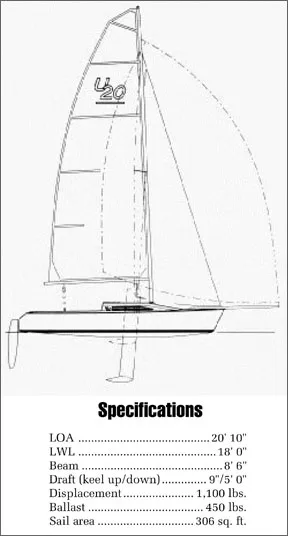
Canepa is the antithesis of the traditional boatbuilder, staid types who worked their way up the professional ladder by lofting lines, stoking steam boxes and laying planks. Rather, he is an experienced multihull sailor and marketing expert who envisioned catamaran performance in a monohull, identified an existing design that might do it, then assembled a team of experienced designers and builders to develop the final product. The result is the Ultimate 20, a boat finding great acceptance among a group of mid-level sailors seeking new levels of performance, and experienced sailors looking for big kicks on smaller boats. It also appeals to the budget-conscious shopper.
A college dropout with a penchant for water sports, Canepa began sailing in 1968 when he abandoned the classroom during sunny Monterey Bay afternoons and practiced sailing a Hobie Cat. By 1972, he’d captured the Hobie National Championships, followed in 1973 with the first of two World Championships. He then headed for Europe to conduct Hobie clinics until the late 70’s, then expanded his knowledge of the small-boat industry while working to introduce O’Neil Wetsuits to the international sailing community. He furthered his knowledge of the watersports market while setting up an American distribution system for a German sailboard manufacturer.
The first seeds of the U20 project were planted in 1986 when he crossed paths with Doug Hemphill, designer of the Hotfoot 20 and Hotfoot 27, reliable performance sloops built and sailed primarily in Canada. At the time, Hemphill was experimenting with the addition to the 20-footer of a bowsprit, asymmetrical spinnaker, and hiking racks. In 1988, with the sailboat market headed for what the Federal Reserve Board calls a hard landing, he purchased the molds for the Hotfoot 20 at a sheriff’s auction and placed them in a storage container.
“We were way ahead of our time,” he said, “hoping for a recovery. There had been too much money in the marketplace during the 80’s, but we felt that after a few years of cooling it would rebound, and that a niche in the small boat market would be strong.”
By early 1993, he was beginning to look like a soothsayer. J-Boats had successfully introduced a line of “sprit boats,” the Melges 24 was a big spot on the horizon, and trailerable boats were again making their presence felt. With that as a backdrop, Canepa formed Ultimate Sailboats International and began assembling his design and construction team.
For openers, he recruited Ron Moore, the well known Santa Cruz boatbuilder who carved a reputation building the Moore 24 and other ultra-light, ultra-fast boats, giving him responsibility for construction of a prototype, using the Hotfoot molds. Business associate John McWaid was enlisted to hitch the prototype to his car and head into the American hinterland.
Upon McWaid’s return, armed with input from sailors and sailmakers at all levels of the sport, a year long tweaking process began when naval architect Jim Antrim was commissioned to begin a massive overhaul of the design. Antrim’s recent successes include work as a member of the structural design team for Bill Koch’s America’s Cup winner, and the design of Aotea, a trimaran that recently set a record in the San Francisco-Hawaii single-handed race.
The designer’s first suggestion was to remove the transom and stretch the boat 9″ to 20′ 10″, without making radical changes to the basic hull shape—a fairly flat bottom that tapers out and up to a curved hull-deck flange. Freeboard was increased 2″ and the beam was increased to 8′ 6″, changes that improved the appearance while increasing leg room in the cockpit and sitting room belowdecks.
His next step was to increase the horsepower of the fractional rig by raising the mast height to 30′ above deck level, and eliminating the need for a permanent backstay by adding spreaders swept back 25 degrees. The changes increased the size of the full-roach, loose-footed mainsail to 205 square feet. A working jib carrying 100 square feet of sail is mounted on a Harken roller furler recessed below the deck.
Antrim redesigned the chord of the keel and added a flared bulb that resembles the whale’s tail design seen on many Cup boats. The keel was also moved aft 8″, resulting in an increase in forward buoyancy and improvements in trim and balance, making crew positioning less critical when attempting to maximize performance.
Because of built-in safety features, Antrim is especially pleased with the bowsprit arrangement. Like most, it is launched by pulling lines led aft from the pole tip to the cockpit, which is where similarities end. Most are housed belowdecks and launched through sealed through-hull fittings. By comparison, the U20’s is housed on deck in a molded slot and held in place by a fiberglass cover that is secured to the deck by six screws. So, while operation of the pole is similar to other boats, Antrim feels his design has two safety advantages: In the event of a collision, the sprit or housing will break under 1,700 pounds of pressure, before the hull is fractured; and, in the event the pole breaks the boat won’t be swamped. A deck-mounted pole also increases the amount of interior space, a consideration on any 21-footer. We tend to agree with his assessment, but this arrangement does detract from the overall appearance of the boat. As an alternative, sailors who wish to fly symmetrical chutes can tack the pole to the mast.
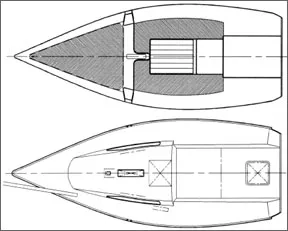
The modified design also incorporates the addition of curves and radiuses to the coachroof and cockpit, subtle changes that softened the edges to improve both appearance and ergonomics. The designer then reorganized the deck layout, and the result is a model of efficiency, enhanced by roller furling and the sprit/asymmetrical chute arrangement. Halyards are internal, led to cleats on the coachroof, so the only lines in the cockpit are main, jib and spinnaker sheets, a single roller furler control, and a line connected to the bowsprit.
Increasing the beam and length increased the cockpit width to 4′ and length to 7′ 8″, providing plenty of room for a typical crew of three, or four when sailing in heavy winds. Sailed with a crew of three, the driver steers from the aftermost position and controls the mainsheet, which attaches to Harken track and a swivel block recessed in the cabin sole. This leaves the trimmers with enough room to perform their tasks forward in the cockpit.
The rudder is a lightweight blade constructed of carbon fiber with fiberglass and wood reinforcement at the head, transom-mounted on pintles and gudgeons that appear to be adequate for the loads developed. By the time Antrim completed the remodeling, the rudder was about all that was left of the prototype.
Construction
Since he has 26 years of experience constructing performance boats designed to sail in rugged conditions, the selection of Moore as the builder was a propitious choice. Though found sailing primarily on the West Coast, his Moore 24 is a seasoned MORA winner, a sturdy boat that holds up well under the punishing conditions found in Pacific waters outside the Golden Gate and along the California coast.
The hull lay-up for the U20 is fairly straightforward, consisting of a 3/8″ core of Baltek balsa, to which 12-ounce layers of bi-directional woven roving knitted in 90-degree angles are applied on interior and exterior surfaces. The final exterior layer is .75 ounce mat. Hydrex vinylester resins are used on exterior skins, and Polyester C2849 on other layers. The deck also is constructed with a Baltek core, over which a 10-ounce layer of cloth is laid, followed by a .75-ounce mat. To enhance the structural integrity of the hull and deck at stress points, two 12″-wide panels of carbon fiber are laid under the keel area and across the width of the deck at the mast step and chainplates. The exterior surface of the hull is a smooth gelcoat surface, the interior a polyester enamel.
Composition of the cockpit sole is identical to the deck, except the core is 3/4″ Baltek.
The hull and deck are bonded with a syntactic slurry of polyester putty, mill fibers and microballoons. Since the deck joint overlaps an eggshell-shaped hull flange that is approximately 2″ wide, both the designer and builder are confident of the structural integrity of the bond, and feel that fasteners would be redundant. Unfortunately, because the joint is exposed, it detracts modestly from the appearance of the vessel and would seem to be vulnerable to collisions.
The bulb keel is raised and lowered by a patent- pending winch assembly that is removable. It can be locked in place by hand with six “Scotty” screws. Canepa said he was considering redesigning the locking device because some owners were shortcutting the procedure by only using four screws. The plate and keel box are fit to the foil with clearance allowed for impact.
Though the mast compression post and trunk for the lifting keel reduce space belowdecks, we didn’t find the U20 to be significantly less spacious or comfortable than similarly sized boats with fixed keels or centerboards, though quarters are reduced by the long cockpit. Surfaces are smooth, edges are rounded, and a bright white finish creates the illusion of spaciousness.
The forward V-berth is 94″ long, tapering to a 64″ width at the mid-section of the boat, which is functional as a large stowage space, or sleeping quarters for two average-sized persons. Below the berth, a fiberglass pan extends to the companionway, incorporating longitudinal stringers that provide support for the berth and separate the space into watertight compartments of 1,800 pounds positive buoyancy. Port and starboard quarterberths are 96″ long, 18″ wide.
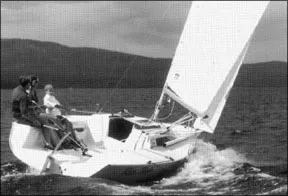
A stowage area located below the companionway is large enough for two laundry-sized baskets, one functioning as a low-cost alternative to a spinnaker bag, the other for stowing loose gear. The outboard motor, fuel and dock gear can be stored in a 12″-deep compartment below the cockpit.
From a strictly utilitarian standpoint, most average-sized persons will find the space adequate for overnight camping trips or nights spent aboard during regatta weekends, as long as cooking and bathing facilities are available.
Performance
McWaid, a strapping 150-pounder, managed to have the boat rigged and ready to go sailing within 30 minutes of his arrival at a San Francisco Bay hoist on a blustery March afternoon. Following months of rain, temperatures had risen into the 60’s and winds were blowing 12-20 knots from the west, so we had perfect conditions to test the boat.
Rigging the Ultimate 20 is fairly simple. The mast cradle is elevated at the front of the trailer, which increases leverage during the hoist of the 45-pound mast while it is attached to the trailer winch. After that, preparing to sail is simply a matter of pinning the shrouds to the chainplates; lowering the keel by employing a patented gantry system that controls its passage between Delrin slides built into the hull; securing an aluminum cover to protect the keel from sliding upward while heeled; attaching the tiller; and heading for open water.
Sailing away from the dock, the first impression is of speed and lightness. The boat displaces only 1,100 pounds, 450 of which are in the keel, so it responds to any movement by the crew. Once we sorted out crew positions and settled down, the boat moved forward quickly in only 2-3 knots of wind as we were blanketed by buildings surrounding the marina.
The boat told us very quickly when we’d cleared the seawall and found fresh breezes by burying her shoulder into a 2′ chop, heeling 12-15 degrees, and squirting forward. We found the helm to be well balanced, even in heavy gusts when beating to weather. Clearly, this boat is happiest when it’s away from the parking lot.
Because we sailed without instruments, it was difficult to gauge speed or sail angle, but we felt as though we were sailing high and fast. When the breeze increased, we reduced headsail sag by tensioning a line led through a block on the furler. During tacks, the driver moves across the boat between the end of the tiller and the mainsail sheet while the trimmers duck underneath the boom.
We also noticed during a beat to weather that shorter crewmembers hiked out on the rail couldn’t reach the foot rests built into the cockpit, relying on the 2″ deck overhang for a handhold. The boat is not equipped with lifelines or hiking straps, a drawback. The deck overhang does deflect spray away from the boat, helping to keep the crew dry. Daysailors will find that sailing an asymmetrical spinnaker takes some getting used to, but the ease with which it is launched and the increase in speed justify its growing popularity, especially since it eliminates the need for an acrobat on the foredeck.
Hoisting the chute is a matter of snaking the tack forward to the end of the pole, sweating the halyard, footing off and holding on while the boat builds speed. Depending on sailing conditions, the jib may be furled or flown.
The boat is fairly forgiving but you have to think fast. While attempting to see how close we could sail to the wind, we nearly broached. Canepa yelled, “We’re going over,” eased the sheet as we rounded up, then trimmed the chute as it filled on a downwind course. Total time to crash, burn, and recover was less than 15 seconds. The key to jibing, we learned, is the release of large amounts of sheet before the main comes across; this way the chute fills in front of the headstay before being blanketed by the main.
We spent an hour putting her through her paces before heading back to the marina, during which time we were impressed with both upwind and downwind performance, as well as the degree to which she seems to meet Canepa’s objective of producing a boat that is both fast and friendly.
We’d feel comfortable sailing it in 20-knot winds and steep chop, but would think twice before taking the Ultimate 20 into open seas. Canepa related that he filled one boat with freshwater to test buoyancy and it didn’t sink. It can be fully enclosed with hatch boards, and there’s room for additional buoyancy.
Conclusions
We’d recommend shoppers take a careful look at the boat for several reasons, first of which is that we think it has a legitimate appeal to a vast audience of saltwater and freshwater sailors. The large cockpit, ease of handling, and speed will be appreciated by casual daysailors, so the boat won’t sit ignored in the parking lot. Racers will be able to push it hard while competing in a one-design fleet under strict class rules. It is well-constructed. Accommodations are adequate for overnighting, and it is easily trailerable.
Total weight of boat and trailer is 1,500 pounds, the keel is only 9″ deep when retracted, so it presents a low profile on the road.
Compared to other sprit boats, it is very affordable: Cost of the basic boat is $19,500, with sails adding $2,900, and a trailer $1,800. A 3-hp. Outboard provides plenty of auxiliary power.
Finally, the boat has been well-accepted in the marketplace: 40 boats have been ordered for delivery in the US and Europe since its introduction one year ago, so it appears likely that racing fleets will be developing.
RELATED ARTICLES MORE FROM AUTHOR
Hello. I recently purchased a sailboat from a private party. He says its a Schock 20, built in 1972. I am trying to find replacement parts since I am restoring this boat. I was told the WD Schock company was sold by Ruth Schock. They (Ruth Schock) currently make power boats. She did give me the number to the people who bought the sailboat company, but I have left 2 messages and nobody returns my call. Can you be of any assistance in trying to figure this all out? I am going to refurbish regardless, but to actually KNOW this boats origin would be very helpful. Thank you for any assistance you can be
John White (951) 451-0404 Homeland CA
LEAVE A REPLY Cancel reply
Log in to leave a comment
Latest Videos

Bahamas Travel Advisory: Cause for Concern?

Island Packet 370: What You Should Know | Boat Review

How To Make Starlink Better On Your Boat | Interview

Catalina 380: What You Should Know | Boat Review
- Privacy Policy
- Do Not Sell My Personal Information
- Online Account Activation
- Privacy Manager

Slide title

Welcome to the Ultimate 20!
The Ultimate 20 Sailboat is the result of a team of sailors with impressive credentials. Jeff Canepa headed a colloboration that included Jim Antrim of Antrim Associates-Naval Architects, sail maker and Olympic medalist Jay Glaser, and 505 builder and foil specialist Larry Tuttle.
PERFORMANCE
Sailors are amazed at the Ultimate 20’s precision control. Underway, sheer acceleration and speed is the first sensation. The Ultimate 20 is a light air performer and planes with stability in a breeze. The spacious cockpit is comfortable and thoughtfully laid out for racing and day sailing.
LET'S RACE!
The Ultimate 20 Class promotes regattas and publishes class information. The Class has hosted a North American Regatta every year since 1995. The boat is mobile at under 1600 pounds trailered. Owners frequently travel to distant regattas in addition to racing in local One-Design and PHRF fleets.
SPECS: Ultimate 20
LOA: 20 feet, 10 inches
LWL: 18 feet
Beam: 8 feet, 6 inches
Draft - keel down: 5 feet
Draft - keel up: 9 inches
Displacement: 1,260 pounds
Ballast: 450 pounds
Mainsail: 205 square feet
Jib: 100 square feet
Class Spinnaker: 452 square feet
Ultimate 20 Class Organization
The Class Association is divided into four Districts within the US. Locally, we organize into fleets, which consist of U20s that regularly race together.
President: Travis Gregory ( email )
Vice President: Gregg Henning ( email )
Secretary/Treasurer: Emily Jones ( email )
District Chairs:
Dean Nelson – East
Marty Smihula – Northwest
Mike Josselyn - Southwest
Mike Reyes – Central

Organization Membership
Membership in the Ultimate 20 Class Association is open to owners or co-owners of U20s, crew members, and anyone interested in supporting the class. Member / Owners receive a decal, which must be displayed on the transom of their boats when racing in sanctioned events.
Annual dues, payable on January 1 of each year, are $55 for Active Members and $55 for Associate members.
The Ultimate 20 Class Association receives no income from any source other than membership dues. Dues support the class association website, our North American Championship event, and our class membership in US SAILING. The class actively sources custom parts to keep the fleet running.
If you would like to join the class association, please download, complete, and submit the Membership Application Form , and make payment via PayPal or send your check for Active or Associate member dues to:
Ultimate 20 Class Association
Secretary-Treasurer
115 Pelican Ct
Mooresville NC 28117
U20 Class Resources
Class Rules (PDF)
North Americans Submission Form (PDF)
Mailsail logo: JPG file | EPS File
Royalty Tag for New Sails Order Form (PDF)
Rigging Specifications and Maintenance
Sailmaker Guide: Doyle
Sailmaker Guide: Ullman
The perfect blend of size and simplicity, creating the ideal boat for racing One Design, PHRF, or a weekend day sail.
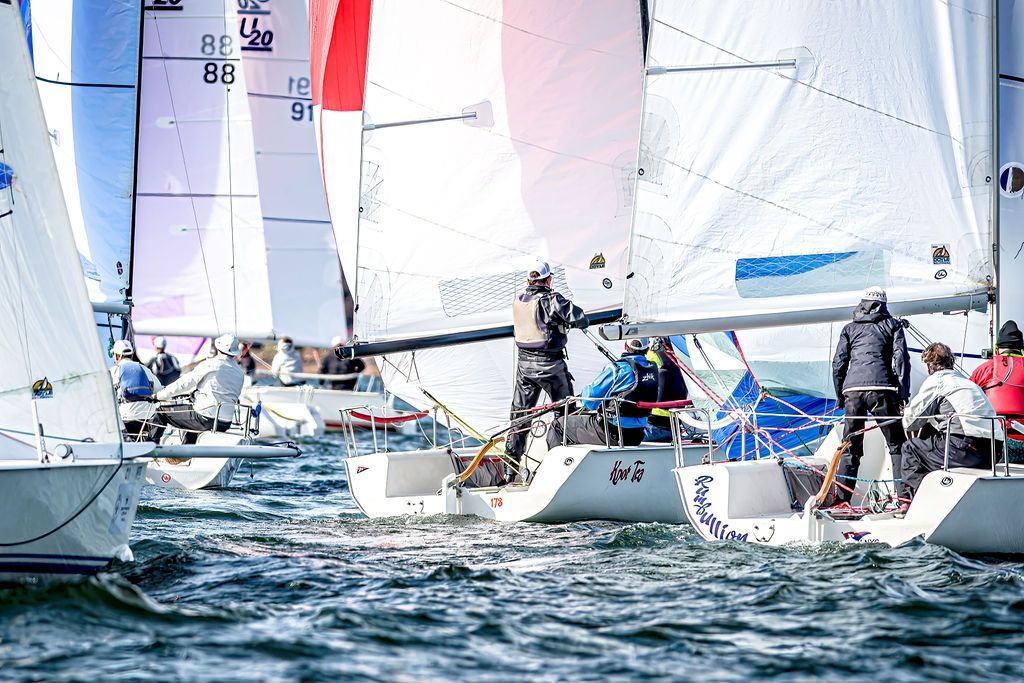
2024 Lake Norman Yacht Club MidWinters
Lake norman dishes out planing conditions again is lake norman still a light air venue, r ichmond yach club midwinters and the big daddy 2024 conclude, the great pumpkin was held on october 28-29 at the richmond yacht club with six boats sailing in the windward leeward course on saturday, and the round the islands pursuit race on sunday., lake norman delivers for the 2023 north american championship, the 2023 north american championship is in the books with three great days of racing at lnyc..
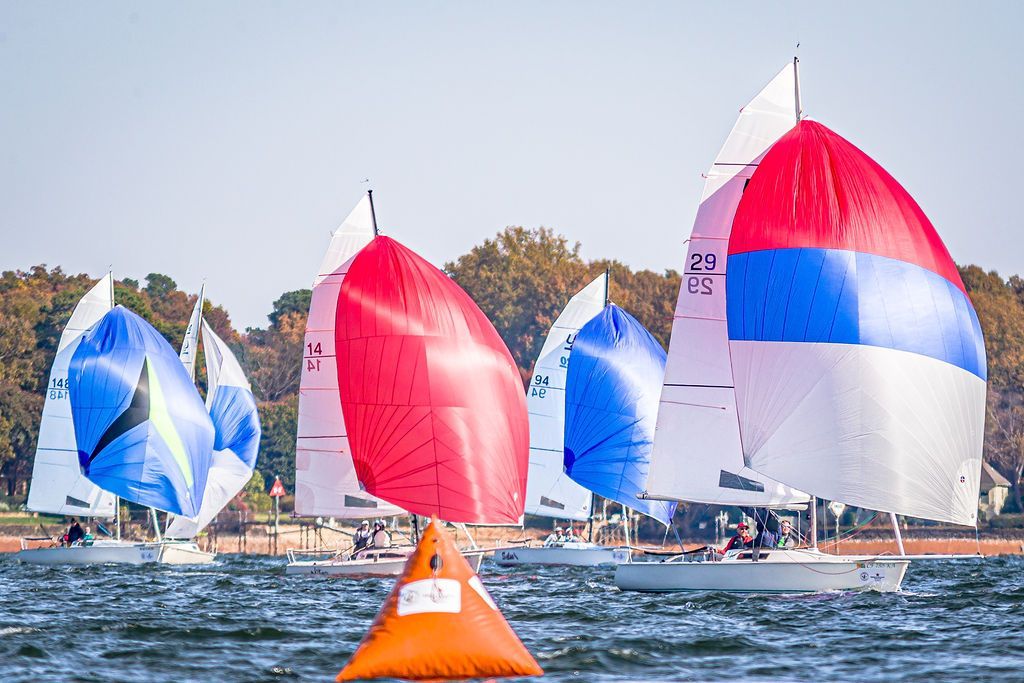
Contact Ultimate 2o Class Organization
© 2023, U20 Class Association.
All Rights Reserved
Website + Hosting: Web Studio Seattle

Home > Find Your Sail > Search by Make and Model > Ultimate > Ultimate 30
Ultimate 30
" * " indicates required fields
Step 1 of 3
Let's Get to Know Each Other
Let's connect, why it's important to partner with a designer on your ultimate 30 sail.
The design is the most critical part of your new sail. Ensuring the sail fits and performs its best is a must for our crew. The Precision Sails Design team are experts at their craft. Unlike other sail lofts all of our sailors work one-on-one with a designer to perfect their Ultimate 30 sail.
No Two Ultimate 30 Sails Are Alike
There are many factors that affect the performance and design of your sails. Location, sailing experience, and weather conditions all come into play when picking the perfect sail. Two mainsails made for two Ultimate 30’s in California and Florida will have different designs, sailcloth, and options based on what is best for the sailor.
Taking measurements is easy. All sailors work alongside our measurement team to measure and confirm their rig specs. This helps ensure your design is flawless and allows us to extend our Perfect Fit Guarantee to all of our sailors.
Discover the best cloth for your sailing needs, our sail details, or more about how Precision Sails is leading the sail-making industry with innovative new practices.
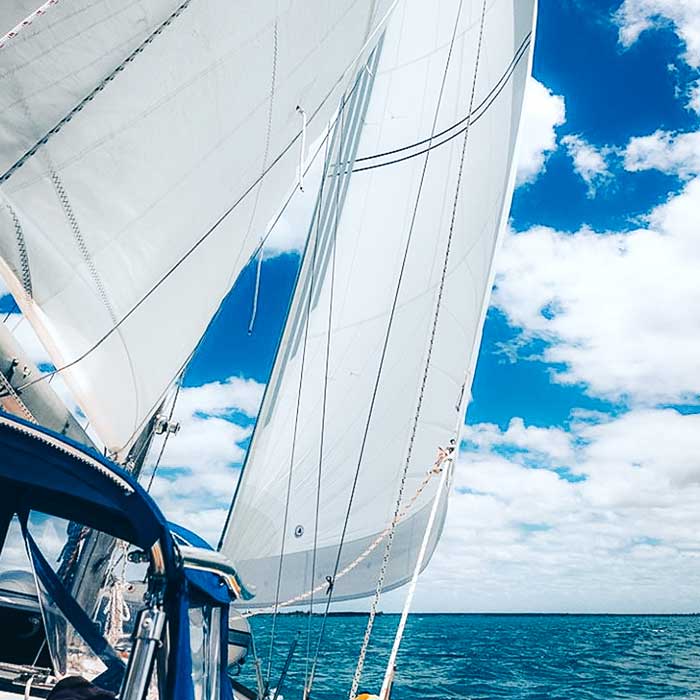
Proudly offering the largest selection of sailcloth in the industry, our team is always available to help you find your perfect sail. Whether you're a weekend sailor, coastal cruiser, or club racer our team is ready to walk you through the process.
Types of Sails
Precision Sail Loft specializes in producing headsails, mainsails, spinnakers, gennakers, and code zeros. So no matter the type of sail you’re looking for, we can help. Our sails are trusted by cruisers and racers alike from around the globe. Review the sail options and craftsmanship available to customize your dream sail.
Build & Process
Every sail we craft is produced to the highest standards with the best hardware, craftsmanship, and skill-set in the industry. Pair that with Precision Sails' approach to communication and your sailboat will be ready to set sail before you know it.
Unparalleled Commitment To Helping Sailors
As experts in design, communication, and production our team is ready to take on the task of making sails for your boat. Give us a call to get started.
“ I just received my asymmetrical spinnaker, with sock and turtle bag, along with a new 135 Genoa. The entire process was simple and both sales and the design team were in regular contact if there were any questions. The customer portal was easy to use and lets you keep track of where in the process your sails are. Great sails, great service -Graham Edwards (Facebook)
“ The whole team at Precision Sails was fantastic from start to finish. We’ve had a laminate main and genoa made so far and have a spinnaker on the way. They listened carefully to our needs and recommended a great sail cloth. We couldn’t have gotten more bang for our buck! -Noah Regelous (Google)
“ We received our spinnaker and launched it yesterday and I just wanted to let you know how pleased we are with it. The service we received from your company was exceptional and the quality of your product is second to none. We will certainly be return customers in the next few months to replace our main and jib sails and will recommend your company to all our sailing buddies. Once again-thank you.” -Daniel Jackson (Google)
“ we had good communication during the planning stages and the knowledgeable people at precision sails really got me fixed up good! The sails look and work fabulous! my boat sails better than it ever had! couldn’t be more pleased with the product AND the service!” -Fred Jelich (Facebook)
“ Our new furling jib for a Corsair 27 Had to be specially designed due to the height of the furler, but this was accomplished quickly and in short order we had our sail which fits beautifully and has a great shape. It’s everything we could have wanted, high tech design, thoughtfully executed and affordable.” -Nancy Y. (Yelp)
Request a Ultimate 30 Quote
Looking to buy a new headsail or mainsail for your Ultimate 30? Request a free quote from Precision Sails for a new custom sail. Our team will work with you to design the perfect sail for you.
- 30 SportCat
- Sixty Solar Sail
- 40 PowerCat
- Sixty Solar Power
- Pricing & Options
- Owners Support
Brokerage Events
Certified pre-owned yachts.

Certified Pre-Owned 2020 X5 “SHELL SHOCKED X” is now on sale!

The very first X5 PLUS: ROUGE ONE is available for re-sale!

$50.000 Price Drop & Extended Warranty! Certified Pre-Owned 2020 X5 ‘FEE’S’ Now On Sale

- Model: X5 Plus - ROUGE ONE
- Year Built: 2023
- Location: Freeport, Bahamas
- Price: US$ 1,800,000
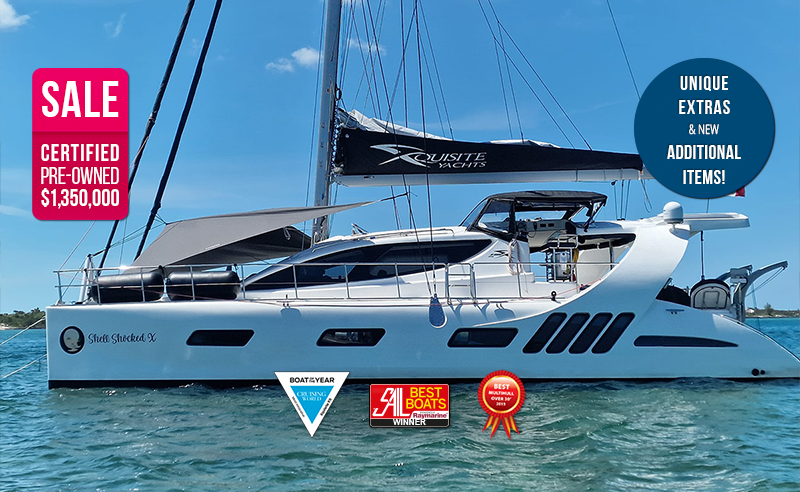
- Model: X5 Sail - SHELL SHOCKED X
- Year Built: 2020
- Price: US$ 1,350,000

Designed for fast and fun sailing, island and beach hopping and occasional overnighting.
Xquisite 30 Sportcat
The Xquisite 30 Sportcat innovative and trailer transportable, designed to deliver the ultimate sailing experience. Easily handled by even non-seasoned sailors, and it can accommodate up to 8 persons onboard.
Very light weight construction, carbon beams, rotating carbon mast and high performance sails are part of the standard package and assures the sporty sailing experience.
The mini keels offer a convenient solution to navigate shallow waters while the optional dagger boards boost the performance even further.
The Xquisite 30 Sportcat: A Trailer-Transportable Catamaran for Ultimate Sailing Fun
30 Sportcat Gallery
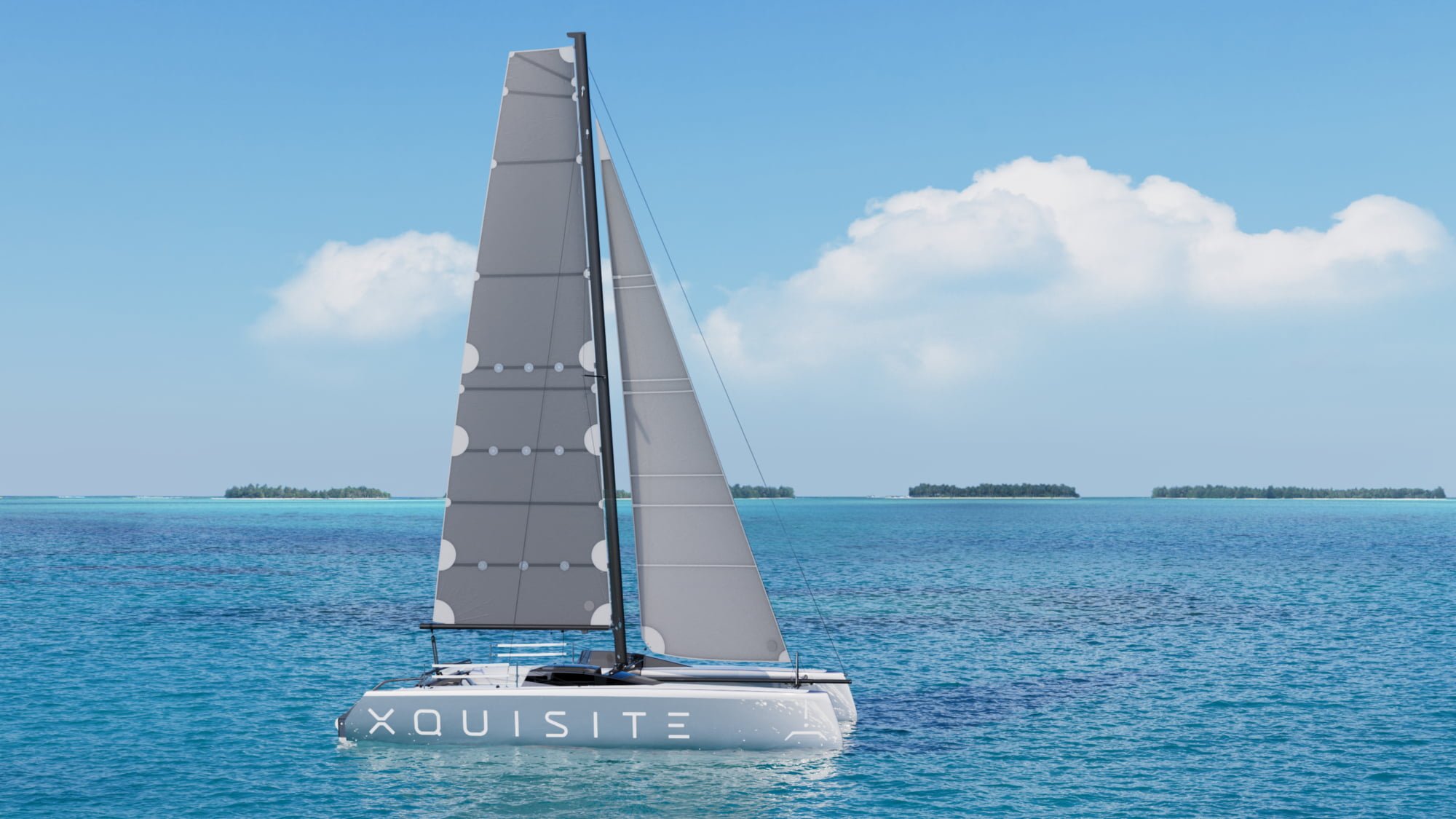
Xquisite 30 Sportcat Specifications & Extras

- E-Glass and Vinyl Ester Composite with Carbon Reinforcement Made by Infusion Method
- Flexiteek Sinthetic Decking
- Carbon Fibre Cross Beams
- Rotating Carbon Mast by Ag+
- Antifouling on Waterline Level on Hulls
- Carbon Bow Pipes
- Carbon Pipe Rudder Connectors and Fins
- Harken Sailing Hardware
- Carbon Stanchions
- Chemical Toilet
- Led Battery Light in Cabins
- 2x Mattresses in Cabins
- Black Mooring Cleats
- Large Trampolines
- Deck Windows 2x
- Outboard Engine Bracket
- Navigation Lights
- Square Top Mainsail 3Di ENDURANCE 760 14,700 Dp by NORTH SAILS
- Jib Medium 3Di ENDURANCE 760 14,700 Dpi by NORTH SAILS
- G Zero Gennaker NPL Code Xi Xi06 CDT by NORTH SAILS
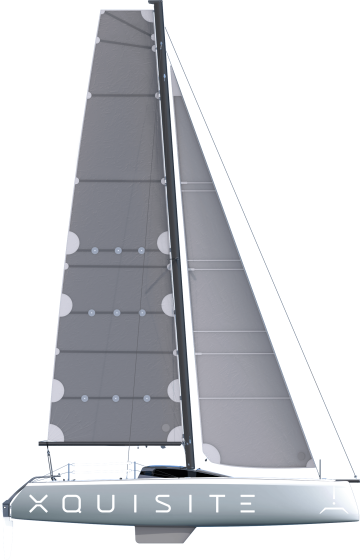
- Exterior Hull Paint
- Carbon Fibre Epoxy Dagger Boards
- Ipad With Waterproof Case and Navigation App
- Carbon Gangway
- Electric Outboard Motor
- Trailer for Easy Transportation
- Safety Pack With Pneumatic Vests, Falres, etc.
- Solar Panels and Battery Pack
- Parasailor Downwind Sail With Hardware
- Shipping and Commissioning
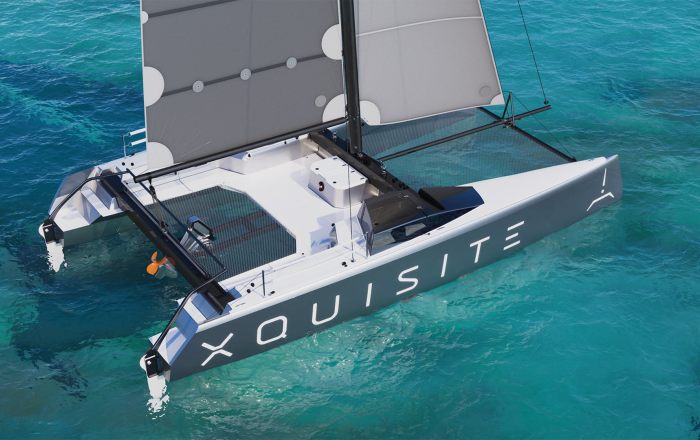
USA/CAN 1-800-243-4206

Private Cabo Sailing, Snorkeling, Whale Watching, Sunset Cruises, Tours & Activities
30′ Sol Mate
Sol mate - coming soon, sailboat description, pricing and reservations, private cabo sailing tours.
- Base Charter Price $550 for 2-6 Adults Up to 6 adults & 2 children maximum**
- Children 12 & Younger Free (Up to 5 Children) Additional Children +$100 per Child (6+ Children)
- Required Deposit Amount $100 per Charter
- Only between April 1st – October 27th
- 9:00 AM Departure Only
- Based on availability
- +$150 up to 8 guests
Private Tour Information
Children 12 & younger
- Free (up to 5 children maximum free)
- +$100 per Child (6 or more children)
Snorkeling equipment is included for sailing, snorkeling and whale watching tours. Snorkeling is best for the morning and early afternoon departures due to better lighting and visibility however if you would like to snorkel prior to the sunset you are welcome to do so.
- Monday-Sunday
- We operate on all major holidays
- Whale watching season is Dec. 15 -March 31
Day Tour Departures
- 3 Hour Duration
Sunset Tour Departures
- Varies Seasonally
- 2.5 Hour Duration
Deposit Information
- We will get back to you within 24 hours if the boat you booked is not available.
- Directions to our check in office will be provided on your confirmation.
You may pay the remaining balance the day of your tour with dollars, pesos, Visa or MasterCard. We do not accept American Express. Credit card payments for the remaining balance have an additional 5% bank service fee.
Pricing Information
- Prices are in U.S. dollars and include tax.
- Prices are honored for morning, afternoon & sunset tours.
Gratuities for the crew not included.
We are happy to accommodate any special requests for your tour. Below is a price listing of additional items we offer:
- Please bring your towels and sunscreen.
- Tanning accelerators are not allowed on board as they stain our cushions.
- Private Boat
- Mexican appetizers
- Fresh fruit & vegetable platter
- Premium Open Bar
- Snorkeling equipment and Floating Devices
- Sightseeing
- Full Inclusion Descriptions Below
We require 72 hours cancellation notice prior to your tour to refund your deposit. If the weather is bad, we will do our best to reschedule your tour or reimburse 100% of your deposit through PayPal in U.S. dollars.
Photo Gallery
Private cabo trips include.
- Private Boat With bilingual, knowledgeable and very accommodating crew.
- Mexican Appetizers Appetizer size beef burritos, cheese quesadillas, Mexican chicken salad dip, fresh guacamole, salsa and chips. Please let us know if you prefer vegetarian or gluten free and have any food restrictions.
- Fresh Fruit and Vegetable Platter Freshly prepared fruits and vegetables
- Premium Open Bar Premium open bar with Jose Cuervo Especial Silver Tequila, Johnnie Walker Red, Bacardi and Captain Morgan Rum, Absolut Vodka, Pacifico & Corona beer, margaritas, red & white wine, sodas (Coke, Diet Coke, Sprite, Fresca), juices (orange, cranberry, Clamato) and bottled water.
- Snorkeling Equipment and Floating Devices (upon request for Sunset Sails) Provided for guests 7 years and older.
- Life Vests Provided for guests 3 years and older.
- Sightseeing El Arco (Land’s End Arch), Lover’s Beach, Medano Beach, sea lion colony and the magnificent Finisterra Rocky Point where the Pacific Ocean meets the beautiful blue Sea of Cortes.
- Wetsuits Provided during the winter month for up to 8 guests upon request only for no additional cost.
- Paddle Boards Two paddle boards are included on board the 37’ Ave Maria Catamaran, 35´Sea Amore trimaran and 44’ Espiritu Santi sailboat upon request only for no additional cost. Paddle boards are subject to weather conditions and are only offered for the 9 AM and 12:30 PM tours. Paddle boards are not permitted for the sunset tours.
All Cabo Sails Boats Offer
- Knowledgeable, bilingual and very accommodating crew
- Delicious appetizers & premium international open bar included in the price
- Fully cushioned cockpits and decks for lounging comfort
- Clean towels covering all cushions for cleanliness and comfort
- All Mexican and US Coast Guard insurance, permits & licenses
- Snorkeling equipment for guests 7 years and older
- Life Vest for guests 3 years and older
- Music on board and bluetooth/iPod connections available
- Reliable Engines
- First aid kits
- Smooth sailing experience and not extreme sailing
- Fabulous Mexican hospitality!
Points of Interest

- The Great Sand Fall
- Pelican Rock (Snorkeling)
- The Middle Wall
- The South Wall
- Lover’s Beach
- Neptune’s Finger
- Sea Lion Colony
- The Shipwreck
- The Pirate’s Cave
- Divorce Beach, no swimming, dangerous undertows
- Solmar Beach, no Swimming, dangerous undertows
- Go to navigation
- Go to content
- Go to footer
- Sun Odyssey 30
- Sun Odyssey
The Sun Odyssey 30 is the first sailboat of this size in three living spaces. Coming from the Sun Odyssey range, evoking pleasure sailing, its beautiful hull with a rear bathing beach is signed by Tony Castro and Jeanneau.
Layouts & Specs
Explore the range.
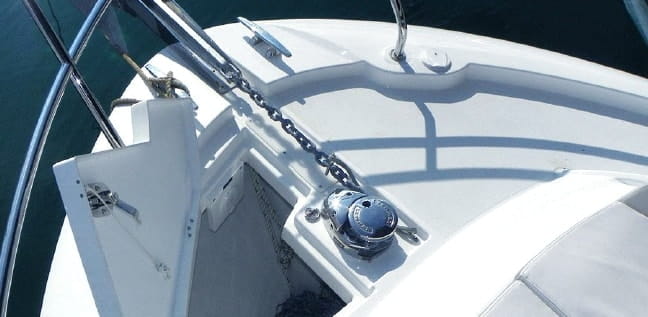
Sun Odyssey 26

Sun Odyssey 31

Sun Odyssey 32

Sun Odyssey 33

Sun Odyssey 34

Sun Odyssey 35

Sun Odyssey 36

Sun Odyssey 37

Sun Odyssey 39

Sun Odyssey 40

Sun Odyssey 42

Sun Odyssey 43

Sun Odyssey 44

Sun Odyssey 45

Sun Odyssey 49

Sun Odyssey 409

Sun Odyssey 24.2

Sun Odyssey 29.2

Sun Odyssey 30i

Sun Odyssey 30i Dériveur

Sun Odyssey 32 Dériveur

Sun Odyssey 32.1

Sun Odyssey 32.2

Sun Odyssey 32i

Sun Odyssey 33i

Sun Odyssey 34.2

Sun Odyssey 36.2

Sun Odyssey 36i

Sun Odyssey 37.1

Sun Odyssey 37.2

Sun Odyssey 39i

Sun Odyssey 40 DS

Sun Odyssey 40.3

Sun Odyssey 41.1

Sun Odyssey 42 CC

Sun Odyssey 42.2

Sun Odyssey 42i

Sun Odyssey 43 DS

Sun Odyssey 44i

Sun Odyssey 45.1

Sun Odyssey 45.2

Sun Odyssey 47 CC

Sun Odyssey 49i

Sun Odyssey 52.2

Sun Odyssey 52.2 Vintage

Sun Odyssey 24.1

Sun Odyssey 28.1

Sun Odyssey 33.1

Sun Odyssey 37.2 (1993-1995)
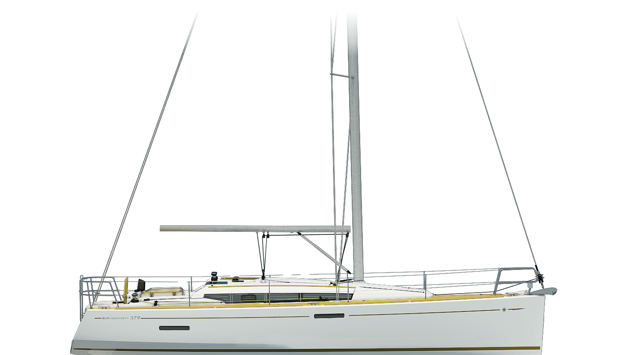
Sun Odyssey 379

Sun Odyssey 42.1

Sun Odyssey 42CC
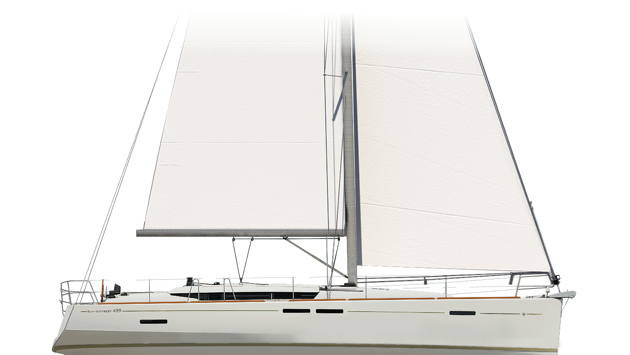
Sun Odyssey 439
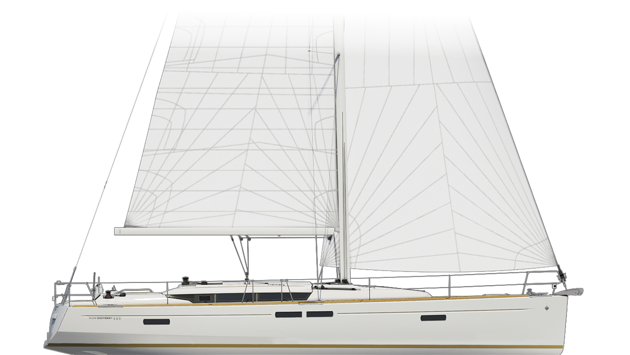
Sun Odyssey 469

Sun Odyssey 47
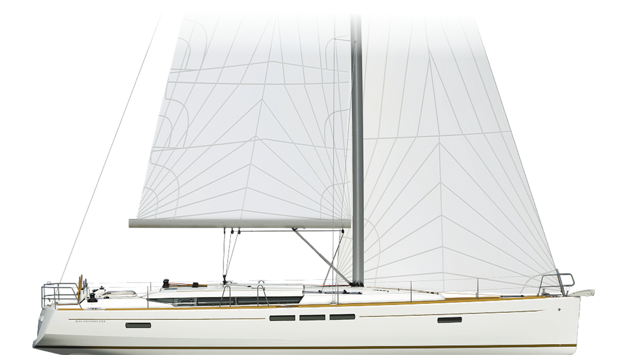
Sun Odyssey 509

Sun Odyssey 51


IMAGES
VIDEO
COMMENTS
Notes. Beam with racks: 14'. Built for the ULTRA 30 Gran Prix Circuit which existed for a number of years in the UK, beginning in the early 1990's. On board cameras were sometimes used with events shown on BBC television. The rules were changed a number of times with trapezes later being allowed. Also called ULTIMATE 30.
But the general feeling was that the open aspect of the Ultimate Yacht Race wouldn't work in the UK as well as a one-design would, with a strong element of cost control. The Ultra was based on our Flyer design, but whereas Flyer was of fairly exotic carbon construction, the Ultra 30 was designed to be of much lower cost in order to widen the ...
The Ultra 30 circuit was the original spectator-friendly sailing concept, with short-course, crash-and-burn style racing broadcast on BBC Grandstand, the prime Saturday sports show of the 1990s.
Ultimate 30, 1990. 30 Sport Boat 30' of Fun! The Ultimate Retro Go-Fast Sailboat. This is one of the original Ultimate 30's constructed for the Ultimate pro Sailing circuit. It has a 30 foot hull, 48 foot mast, 16 foot beam/racks, and 20 foot retractable bowsprit. It was designed by Ian Murray, and is basically an Aussie 18 skiff on steroids.
Ultimate preowned sailboats for sale by owner. Ultimate used sailboats for sale by owner. Home. Register & Post. View All Sailboats. Search. Avoid Fraud. ... 29.92' Catalina 30 Sloop Berts Boat Yard North Weymouth, Massachusetts Asking $17,250. 42' Beneteau 42 CC Oceanis Sint Maarten Asking $149,000. 42' Hunter Passage 42
Ultimate 30, 1990, Cincinnati, Ohio, $24,995, Back on market, Price reduced 7/6/11 to $21,900, Ad expired: ... Texas Lakes: Advertise with us: Contact: Free Sailboat Ad: Go to Sailing Texas classifieds for current sailboats for sale . Ultimate 30, 1990 Racing sloop Trailer included 2 spinnakers 2 sets of sails for different wind conditions ...
Beam with racks: 14'. Built for the ULTRA 30 Gran Prix Circuit which existed for a number of years in the UK, beginning in the early 1990's. On board cameras were sometimes used with events shown on BBC television. The rules were changed a number of times with trapezes later being allowed. Also called ULTIMATE 30.
And for the Ultimate 30's, it will be winner-take-all. Each boat pays $20,000 to enter; in Corpus Christi, the purse will be $120,000. Darden expects momentum to pick up after the Texas race.
Add to Watch List. Send to Friend. 30 ft sports boat (Ultimate / Ultra 30 modified) Designed by Iain Murray, 18ft skiff legend and Americas cup skipper. McConaghy built, Carbon nomex. Bulb keel, 5 trapeze, with a 5metres bow sprit, 15 metre Aluminium mast. Keel crane, Trailerable.
The Hunter 27 is one of the most popular sailboats under 30 feet and has the numbers to prove it with over 2000 of these boats sold. The Hunter 27 is a series of sailboats, built by Marlow Hunter in Florida, USA, since 1974. Variations of the Hunter 27 are still being produced today. This sailboat is great under sail but is also powered by a 14 ...
The Ultimate 30 one design produced by the builder Pms and designed by Japec Jakopin, is a cabin cruiser for regatta, rigged Sloop ... read more on Sailing The Web, the ultimate sailboat database ... boat type. cabin cruiser. purpose. regatta. equipment. Sloop. hull material. fiberglass. production type. XXXXXXX production period. 0000-0000 ...
She is the result of blind chance, opportunism and intuition rather than engineering and design. Nemo started life as the Hexcel Ultimate 30 professional racing skiff designed by Ian Murray of Australian 18 fame and built in carbon/nomex by McConaghy in Sydney Australia. After the boat sat in storage for several years, Jonathan McKee purchased ...
The Ultimate Guide to Choosing a 30 Sailboat: Factors to Consider and == Short answer 30 sailboat: == A 30 sailboat refers to a specific class of sailboats that measure around 30 feet in length. These boats are generally designed for cruising and racing purposes, offering a balance between comfort and performance on the water.
The result is the Ultimate 20, a boat finding great acceptance among a group of mid-level sailors seeking new levels of performance, and experienced sailors looking for big kicks on smaller boats. ... McWaid, a strapping 150-pounder, managed to have the boat rigged and ready to go sailing within 30 minutes of his arrival at a San Francisco Bay ...
Price: $41,995 (FOB La Selva Beach, CA) includes sails and trailer. Builder: Ultimate Sailboats, La Selva Beach, CA; tel. 800-724-5820, www.ultimatesailboats.com. Construction: Hull and deck are hand-laid E-glass vacuum-bagged over a balsa and foam core. Carbon fiber, Kevlar, and S-glass are used to reinforce load points.
Welcome to the Ultimate 20! The Ultimate 20 Sailboat is the result of a team of sailors with impressive credentials. Jeff Canepa headed a colloboration that included Jim Antrim of Antrim Associates-Naval Architects, sail maker and Olympic medalist Jay Glaser, and 505 builder and foil specialist Larry Tuttle.
For almost 20 years, we've called this awards program SAIL Best Boats, but this year, we're refining and renaming this program to better and more fairly represent the boats we've selected. Restricting boats to categories and labels—such as Best Cruising Monohull 30-40 feet and Best Performance Monohull 40-50 feet—doesn't bring our readers the full picture.
Buy new custom sails for Ultimate 30 sailboats. Browse through popular models and create your own custom mainsail or headsail online.
initial video up load to u tube
The Xquisite 30 Sportcat innovative and trailer transportable, designed to deliver the ultimate sailing experience. Easily handled by even non-seasoned sailors, and it can accommodate up to 8 persons onboard. Very light weight construction, carbon beams, rotating carbon mast and high performance sails are part of the standard package and assures the sporty sailing experience.
Sailboat Description. Sol Mate is a beautiful, roomy and very comfortable 30′ Islander sailboat built in the USA. Spacious flat fully cushioned deck for ultimate comfort and relaxation. Accommodates 4-6 guest on the cushioned deck and 4 guests in the cushioned cockpit. This boat has a fully shaded cockpit.
Ultimate Sailboats International: Designer: Jeff Canepa/Jim Antrim: KLSC Leaderboard. Sailboat Calculations Definitions S.A. / Displ.: 36.56: Bal. / Displ.: ... Numbers below 20 indicate a lightweight racing boat, small dinghy and such; 20 to 30 indicates a coastal cruiser;
Ultimate Outboard Cruiser. Offering the perfect year-round family cruiser, ideal for a weekend away or simply a day on the water. NC WEEKENDER. NC 695 SERIE2 ... The Sun Odyssey 30 is the first sailboat of this size in three living spaces. Coming from the Sun Odyssey range, evoking pleasure sailing, its beautiful hull with a rear bathing beach ...